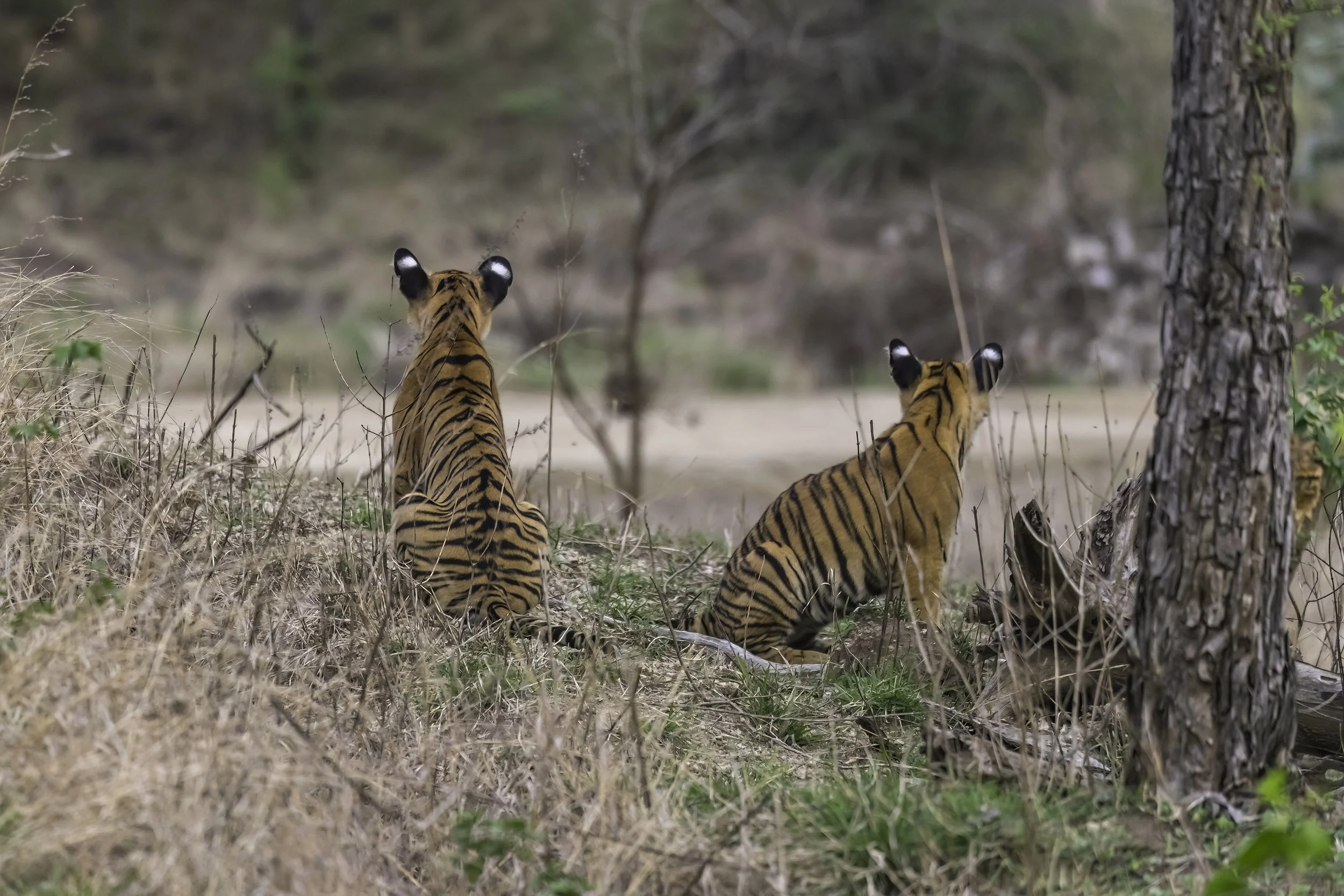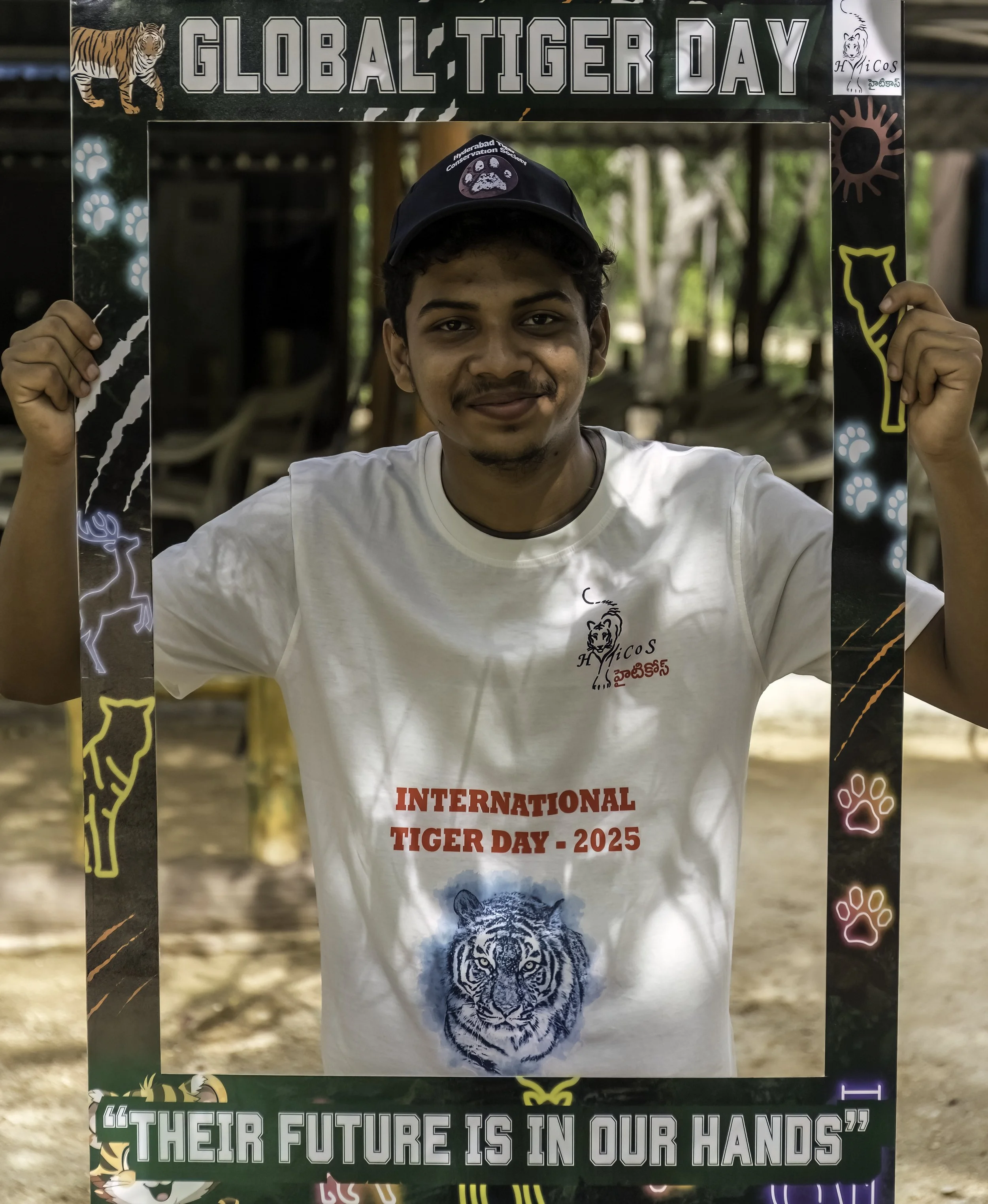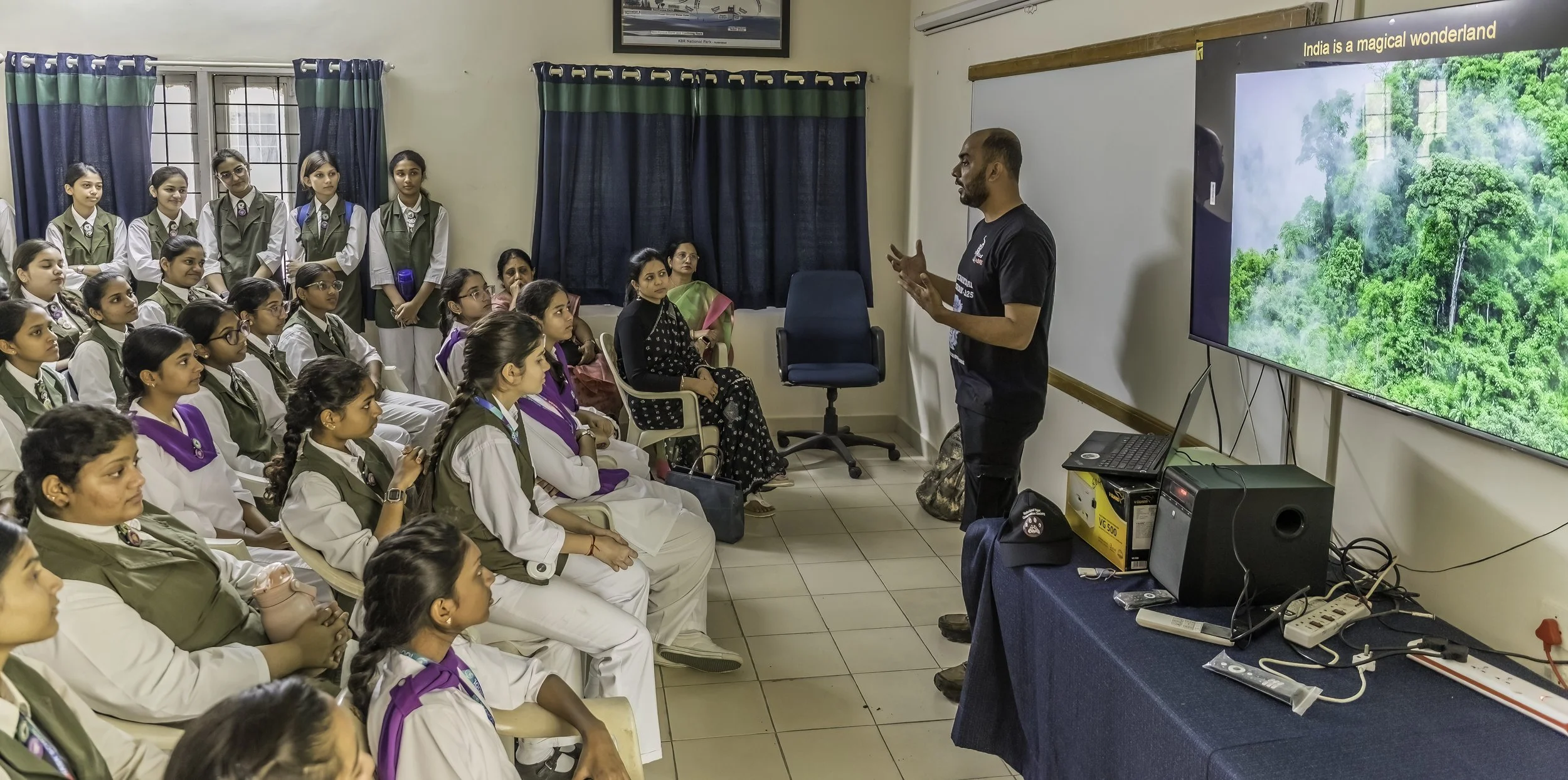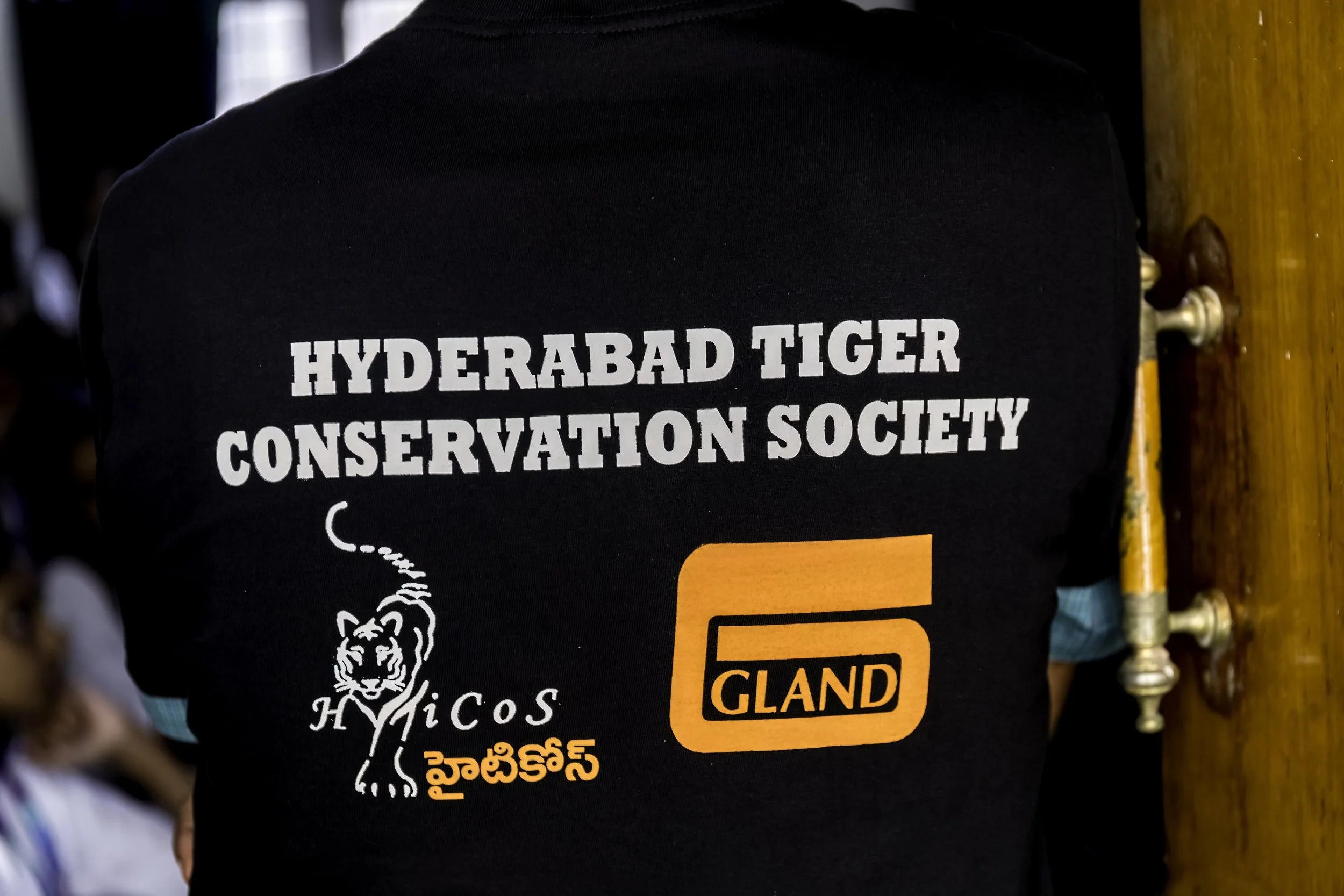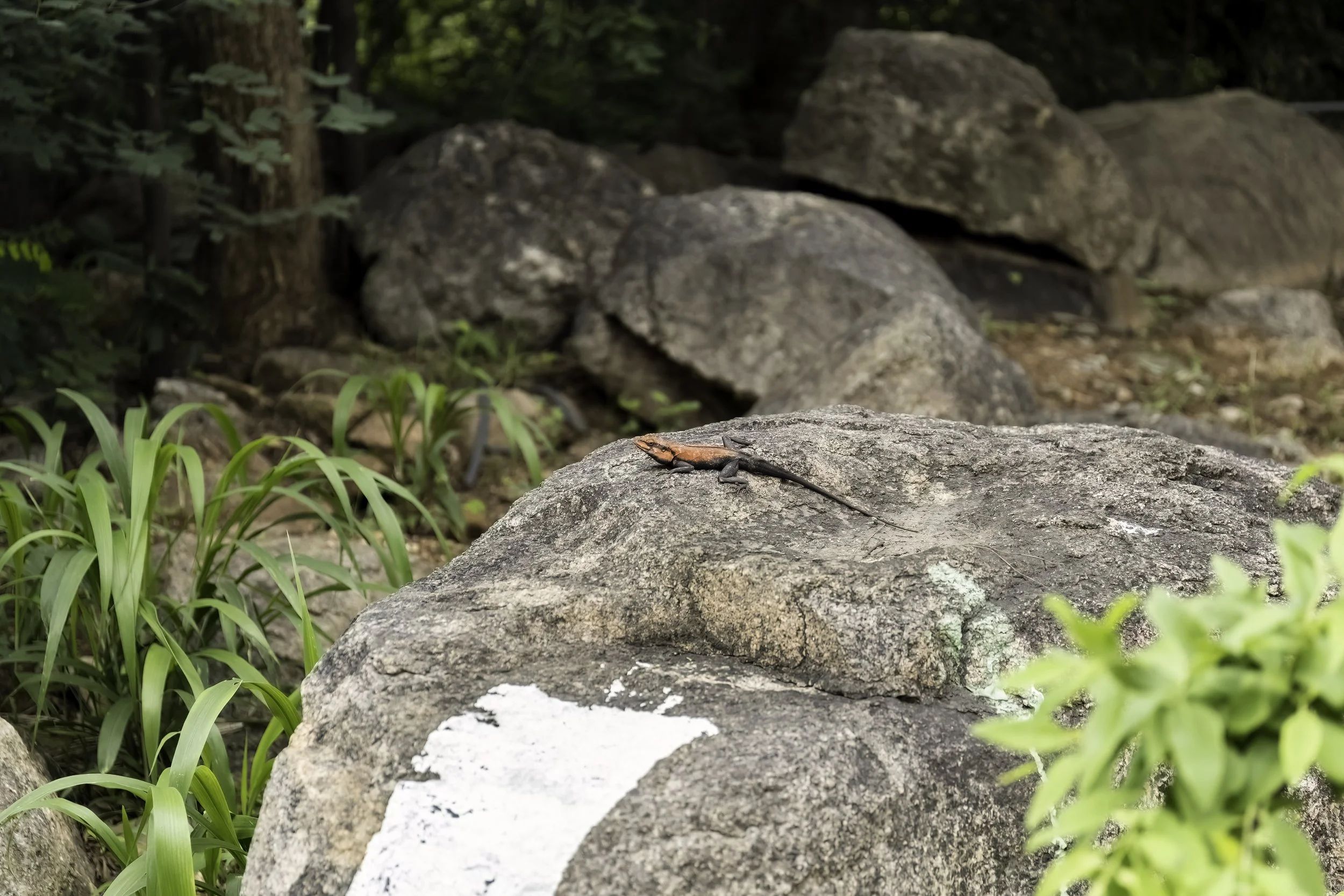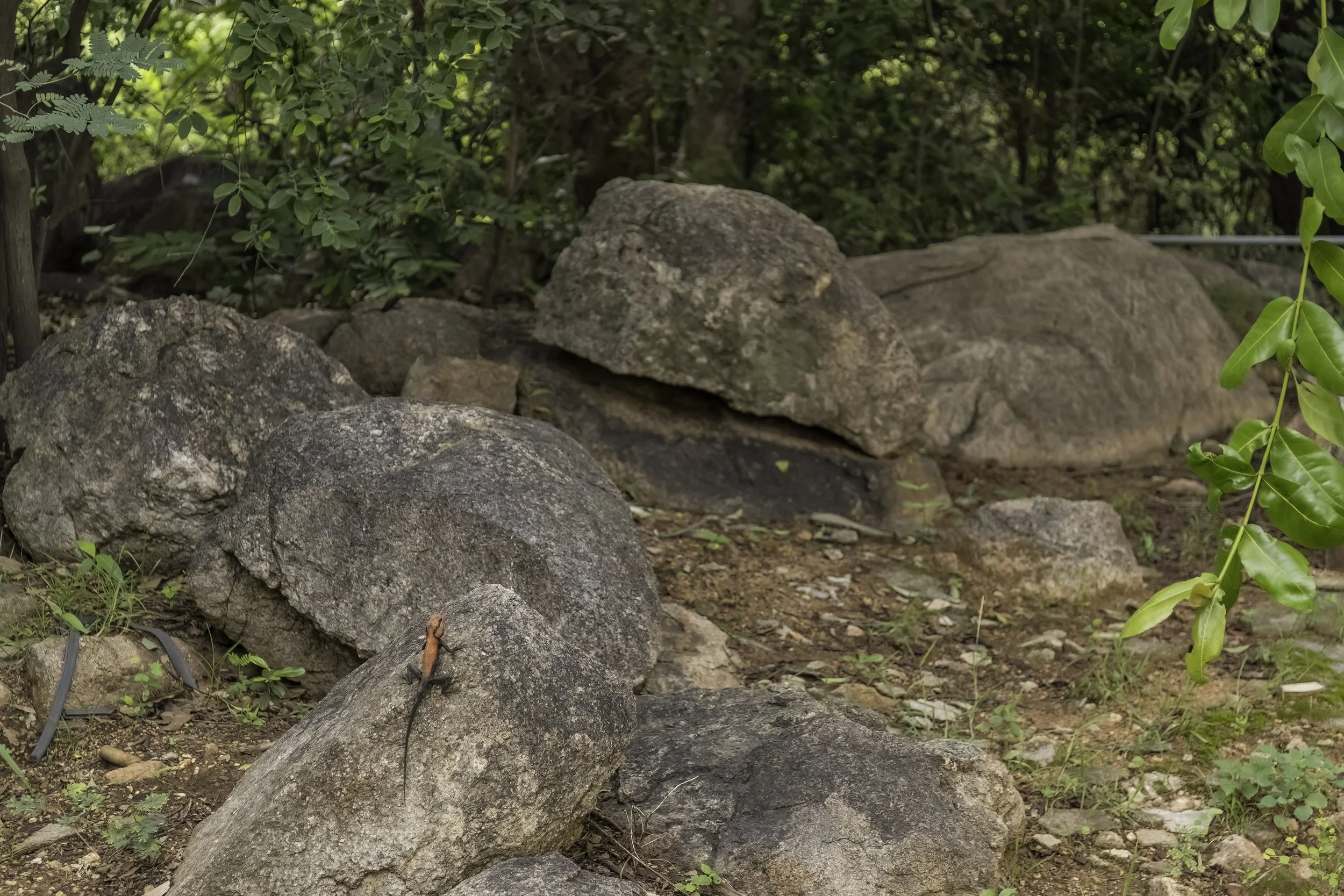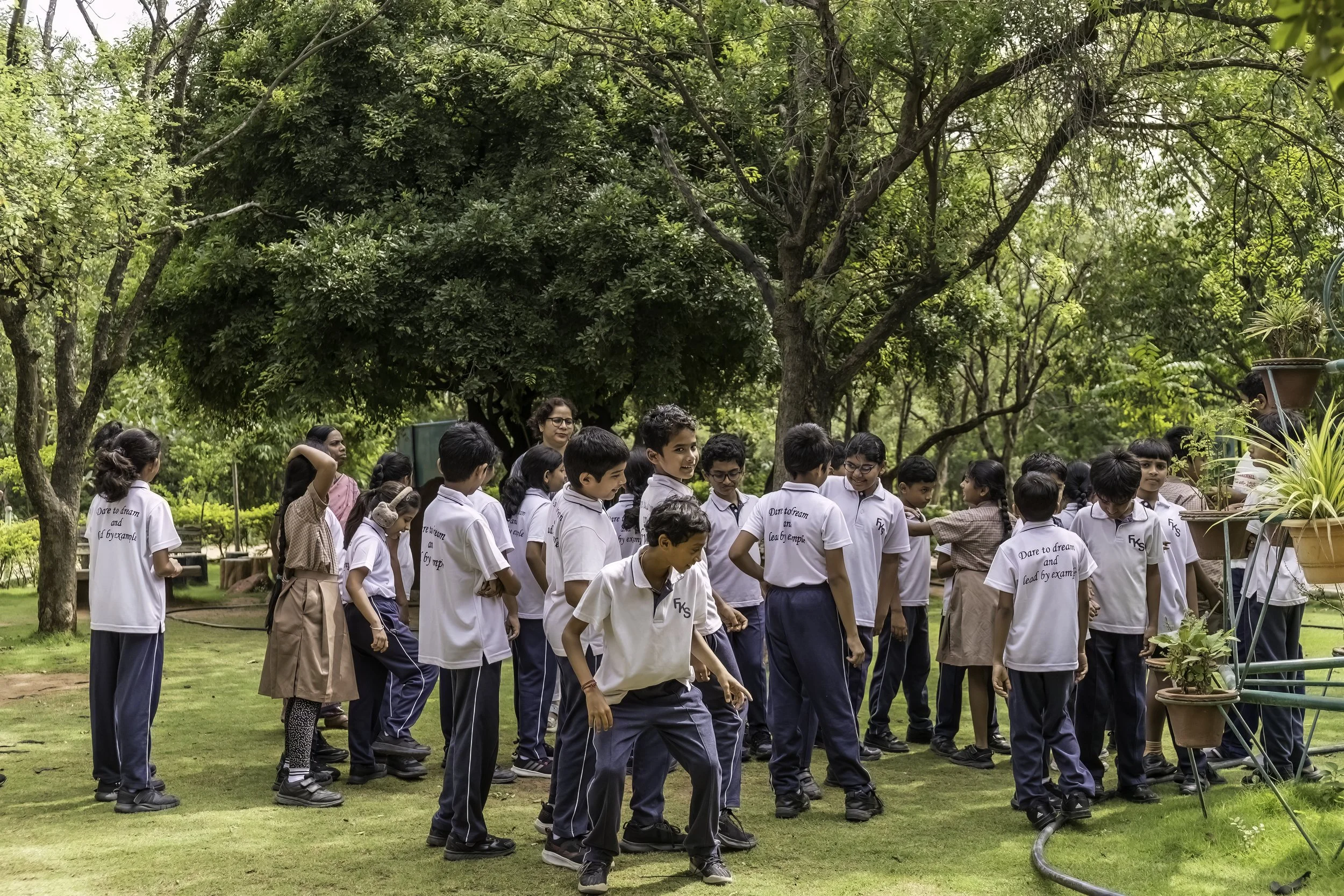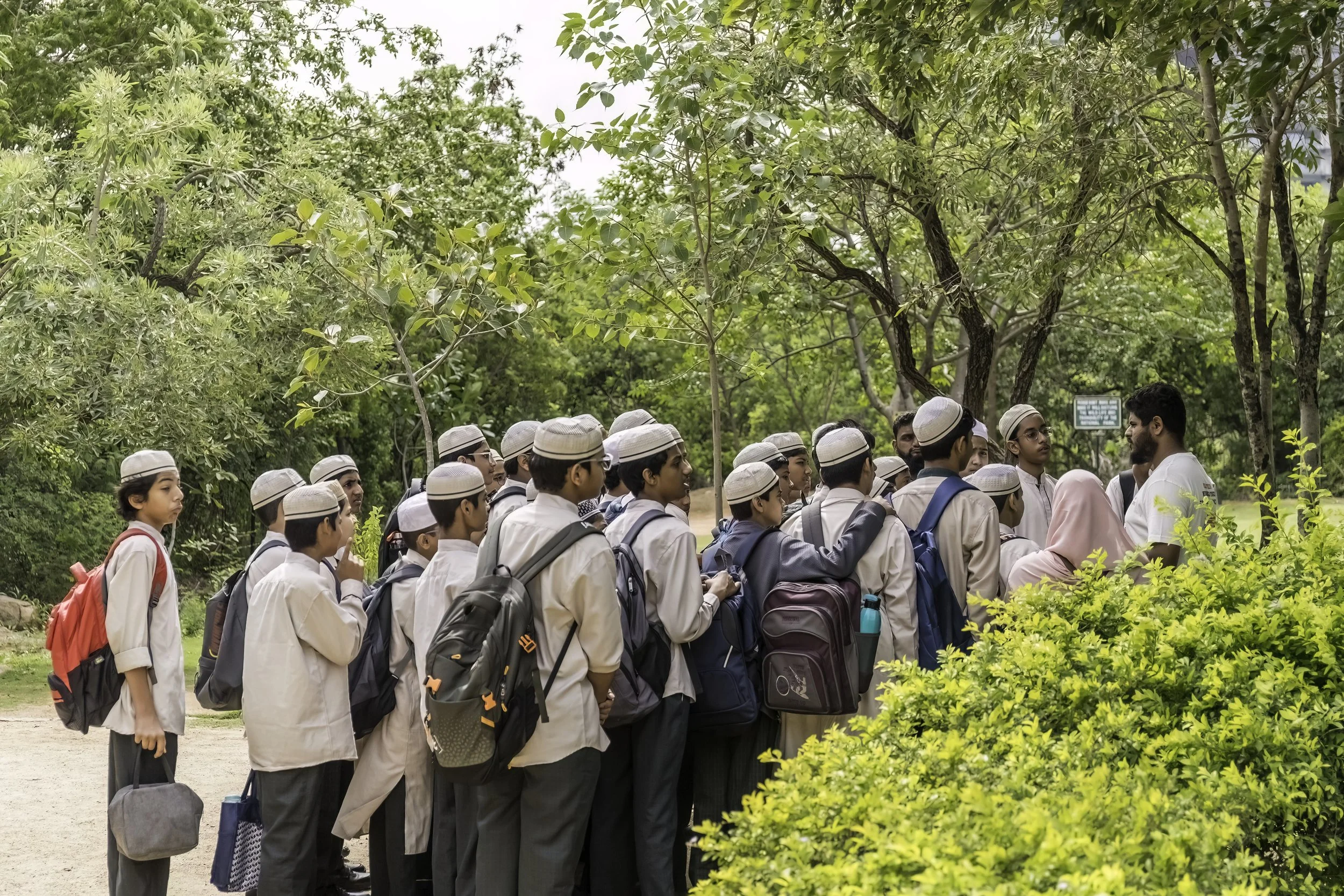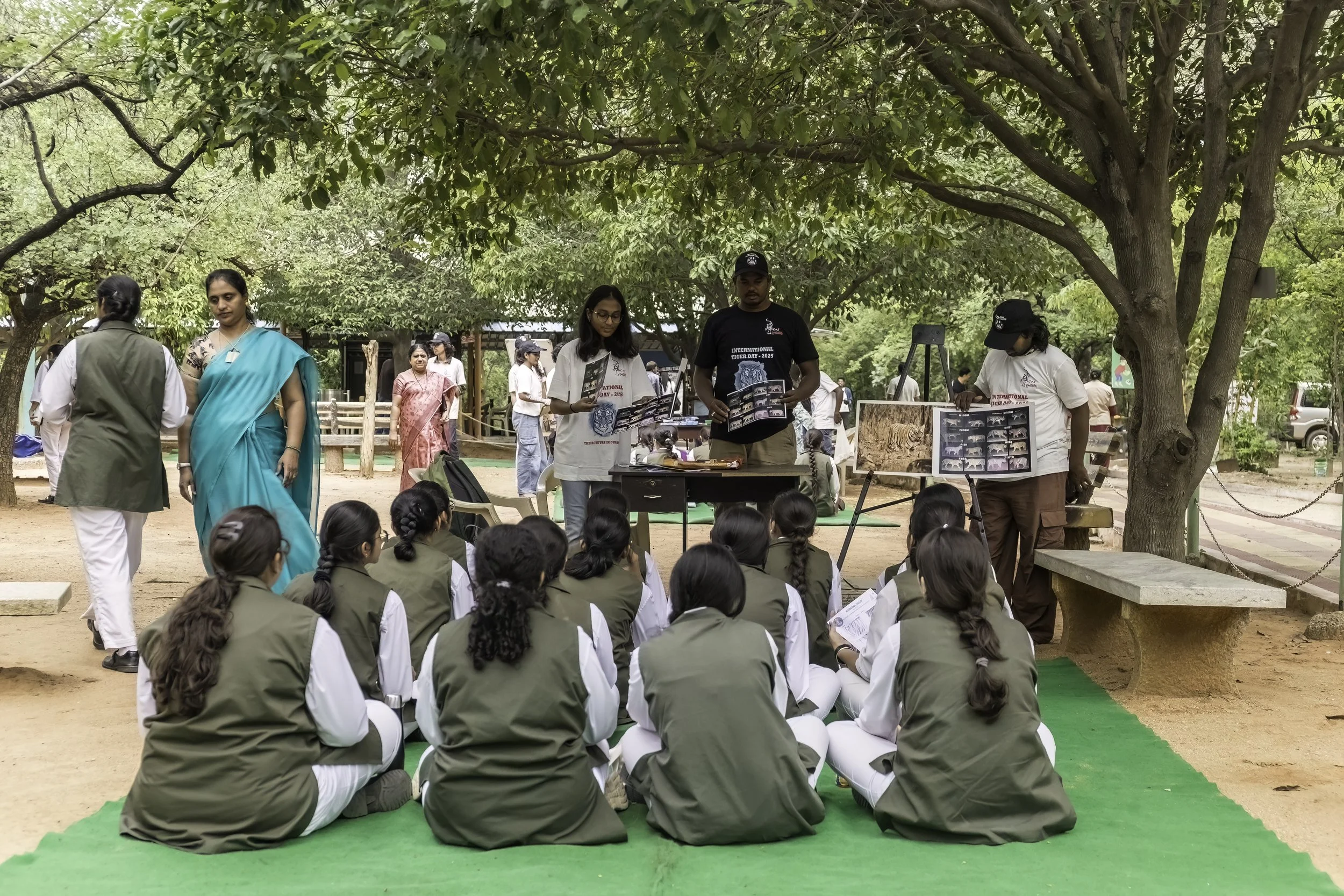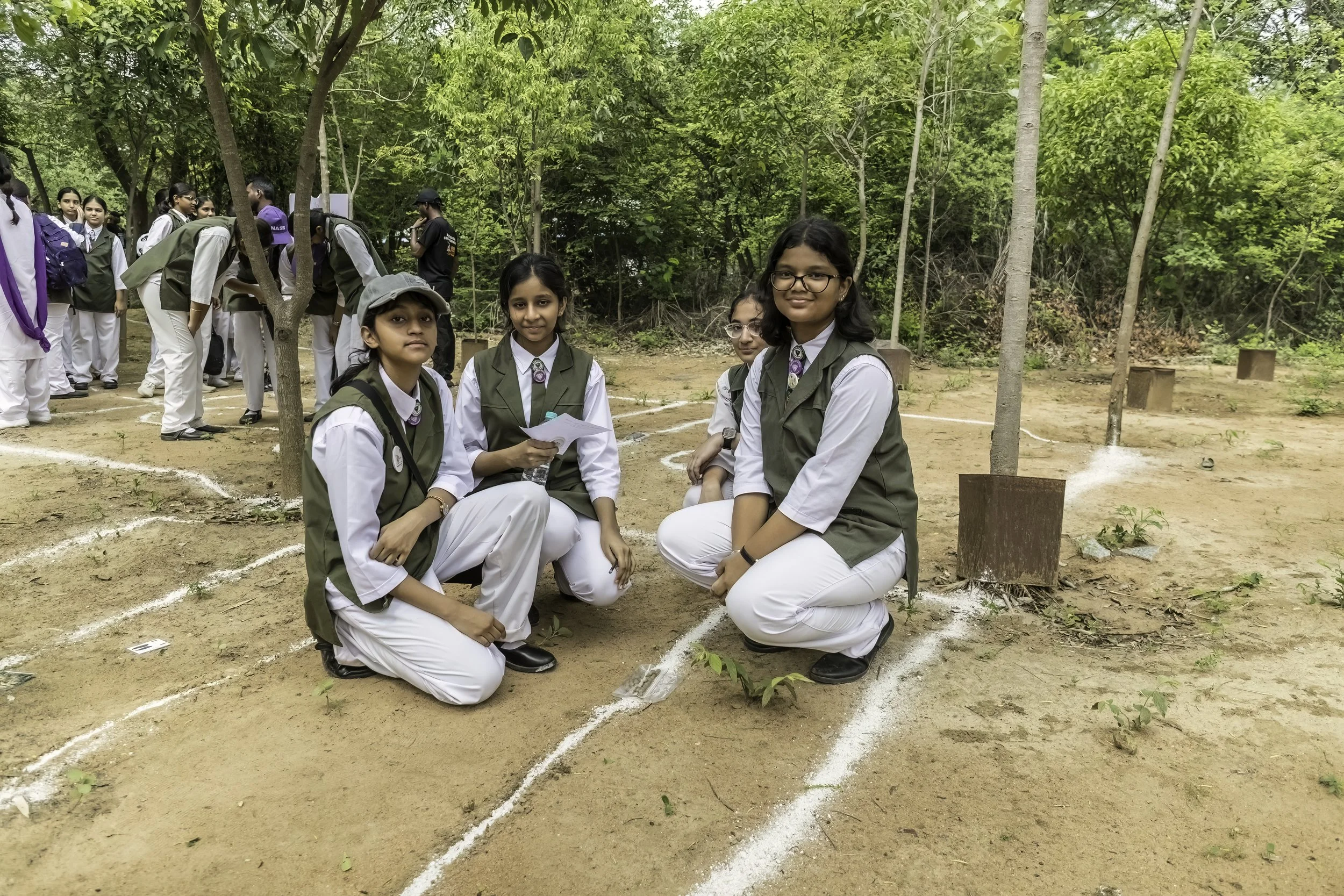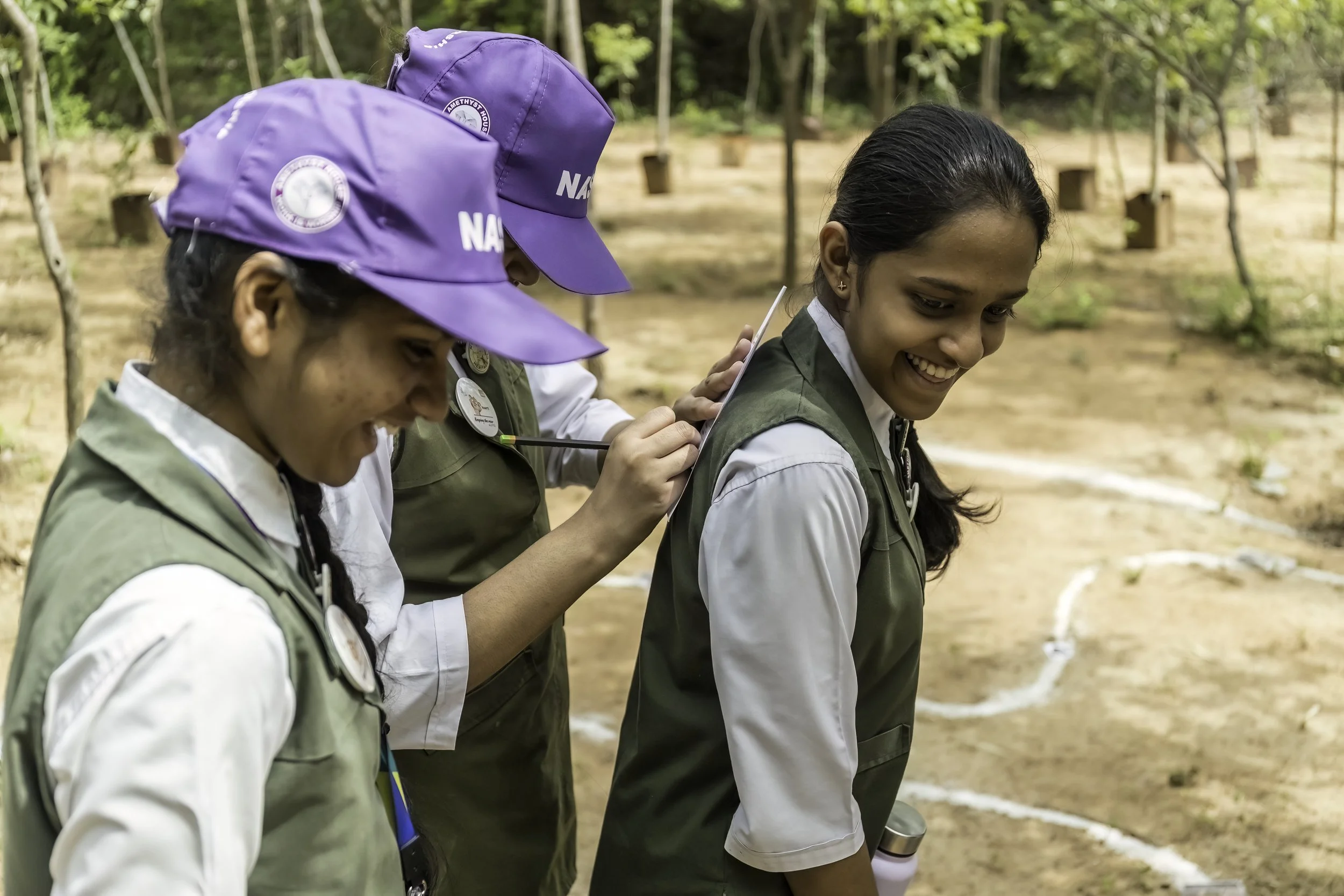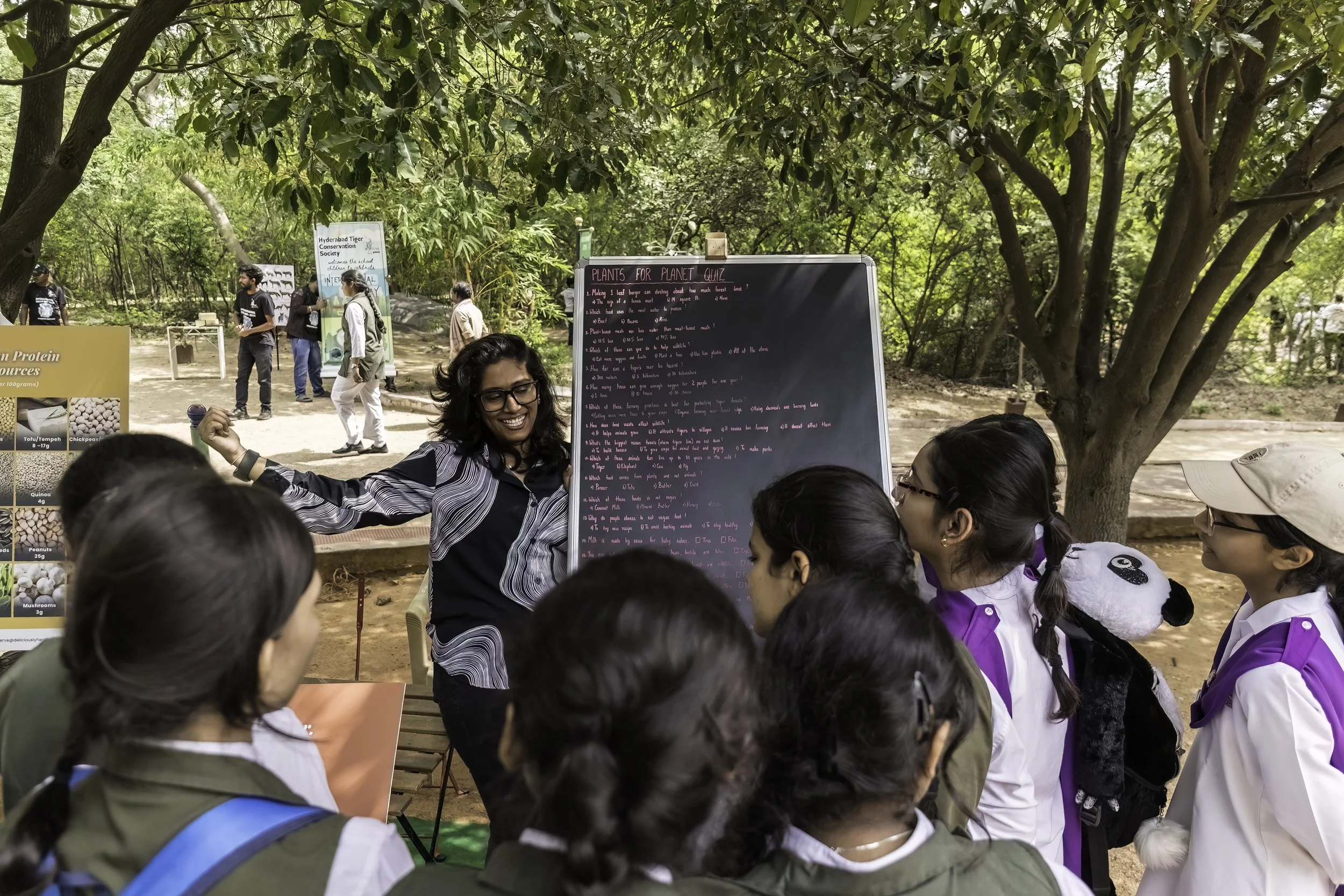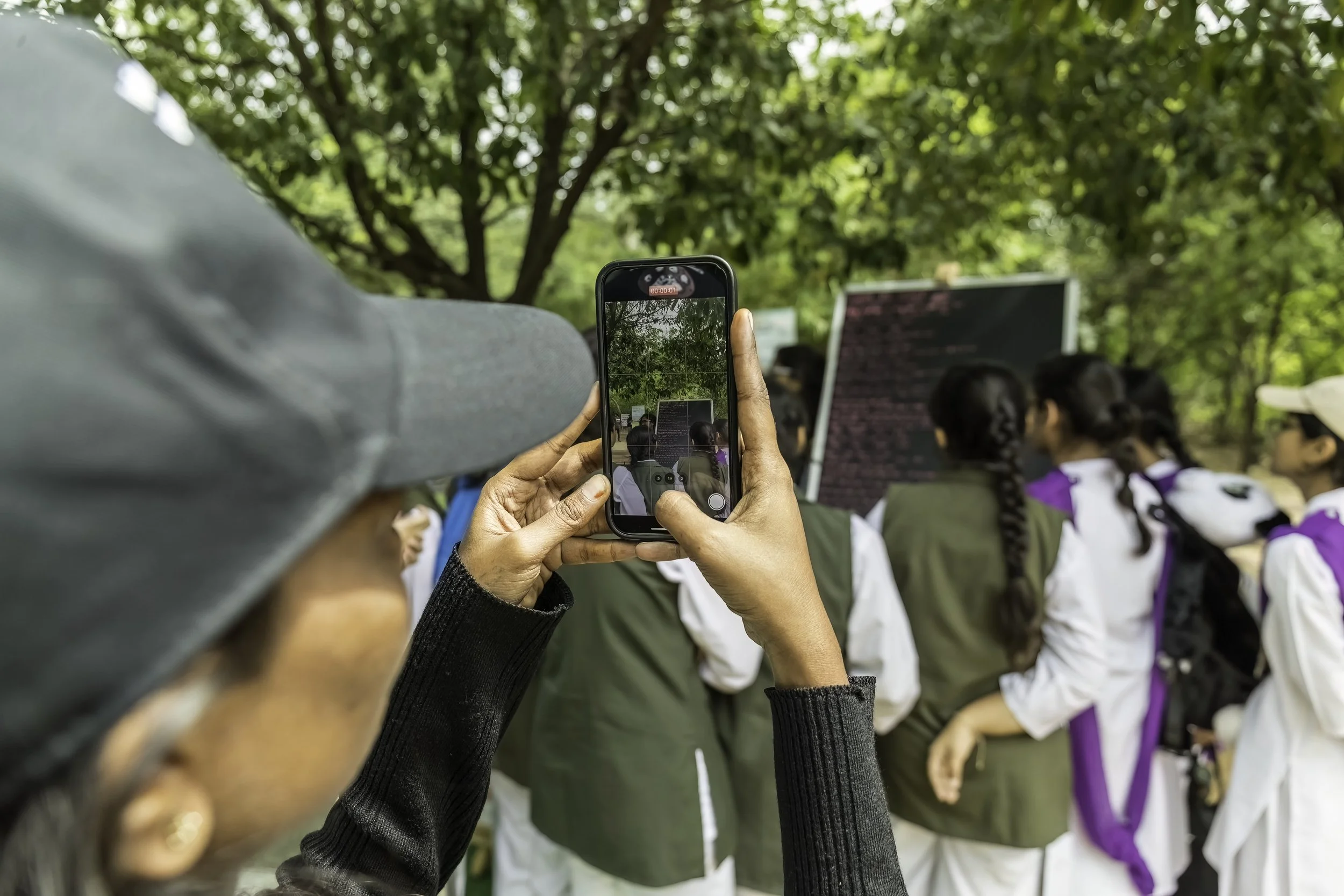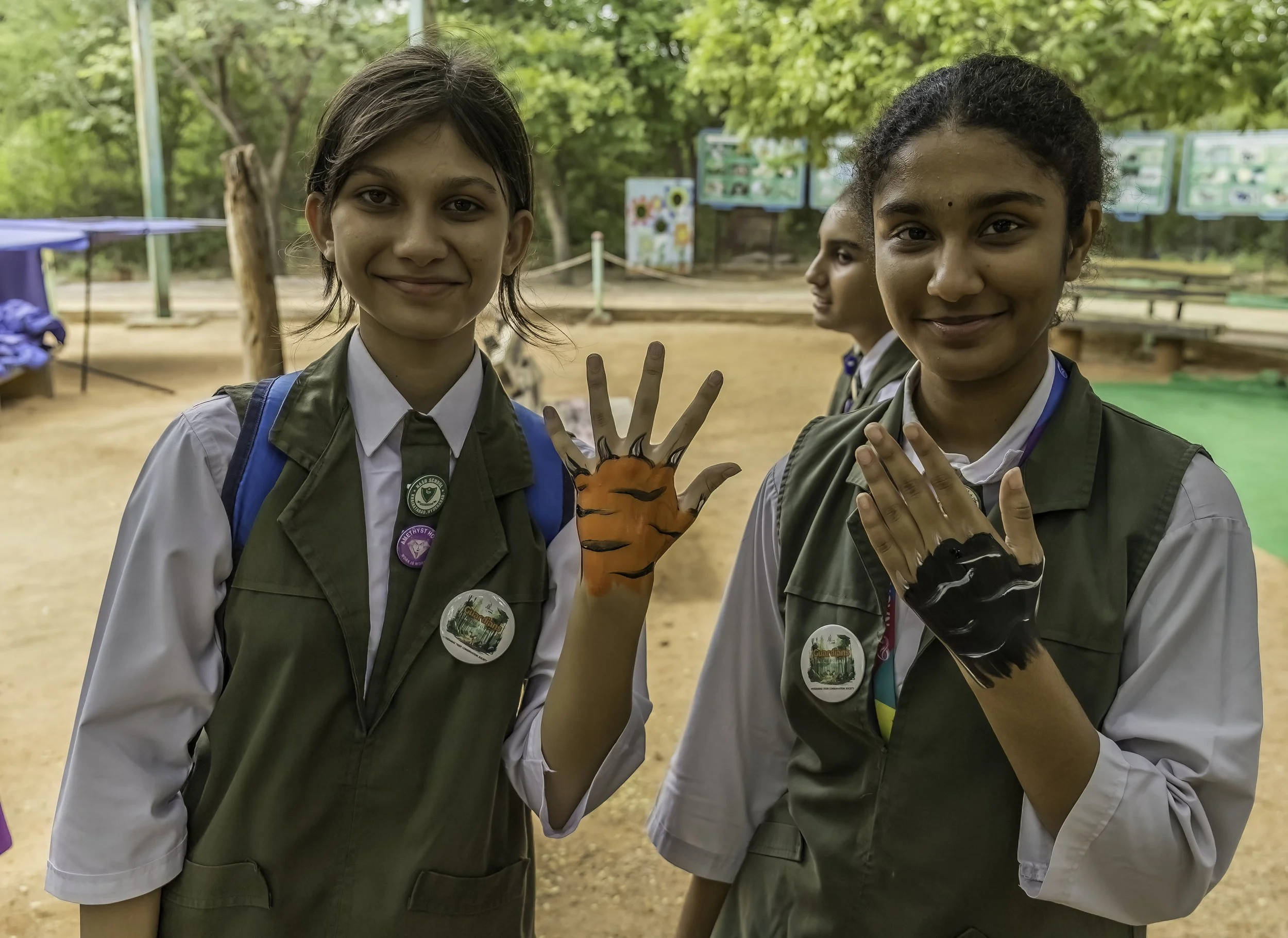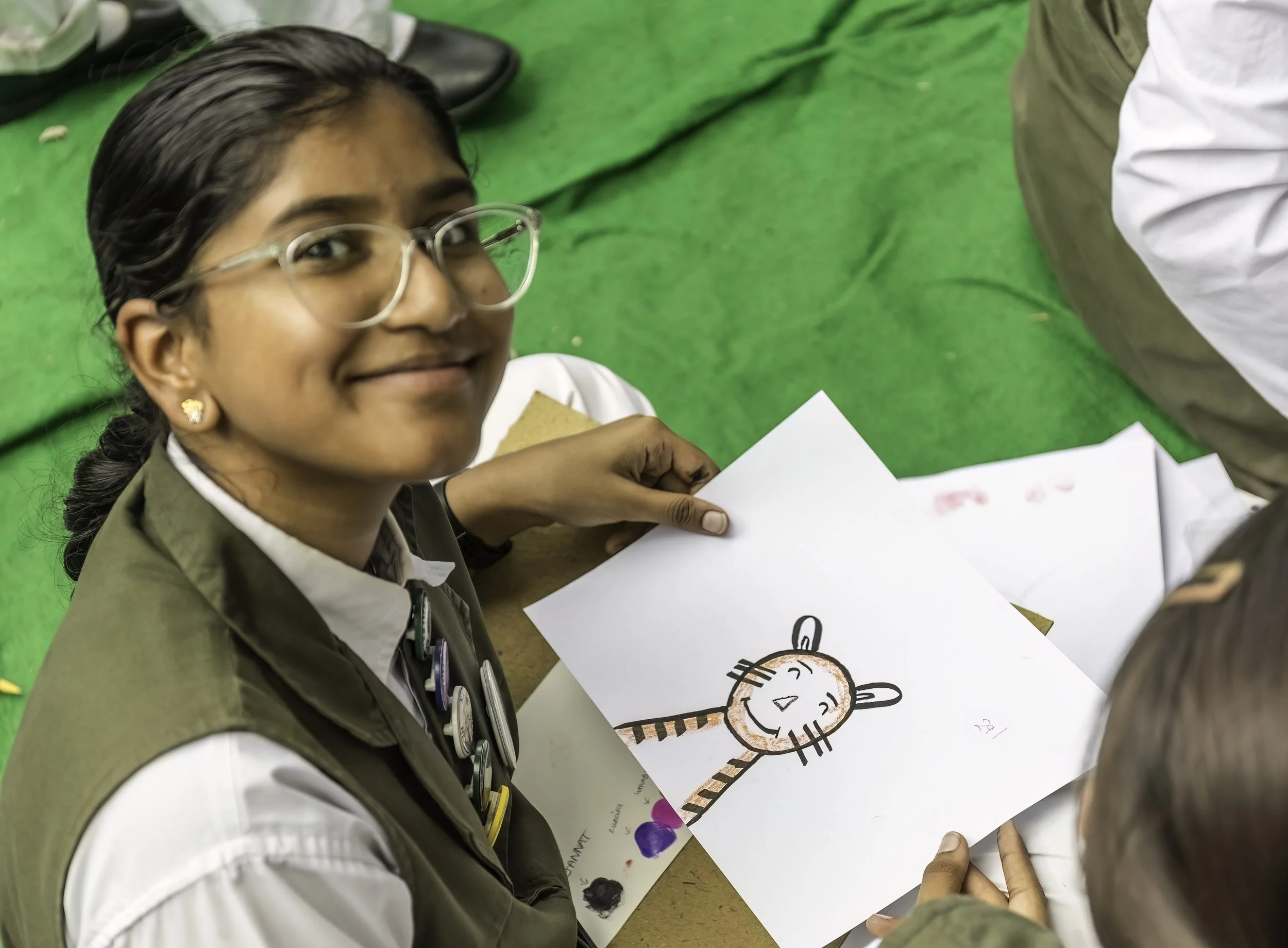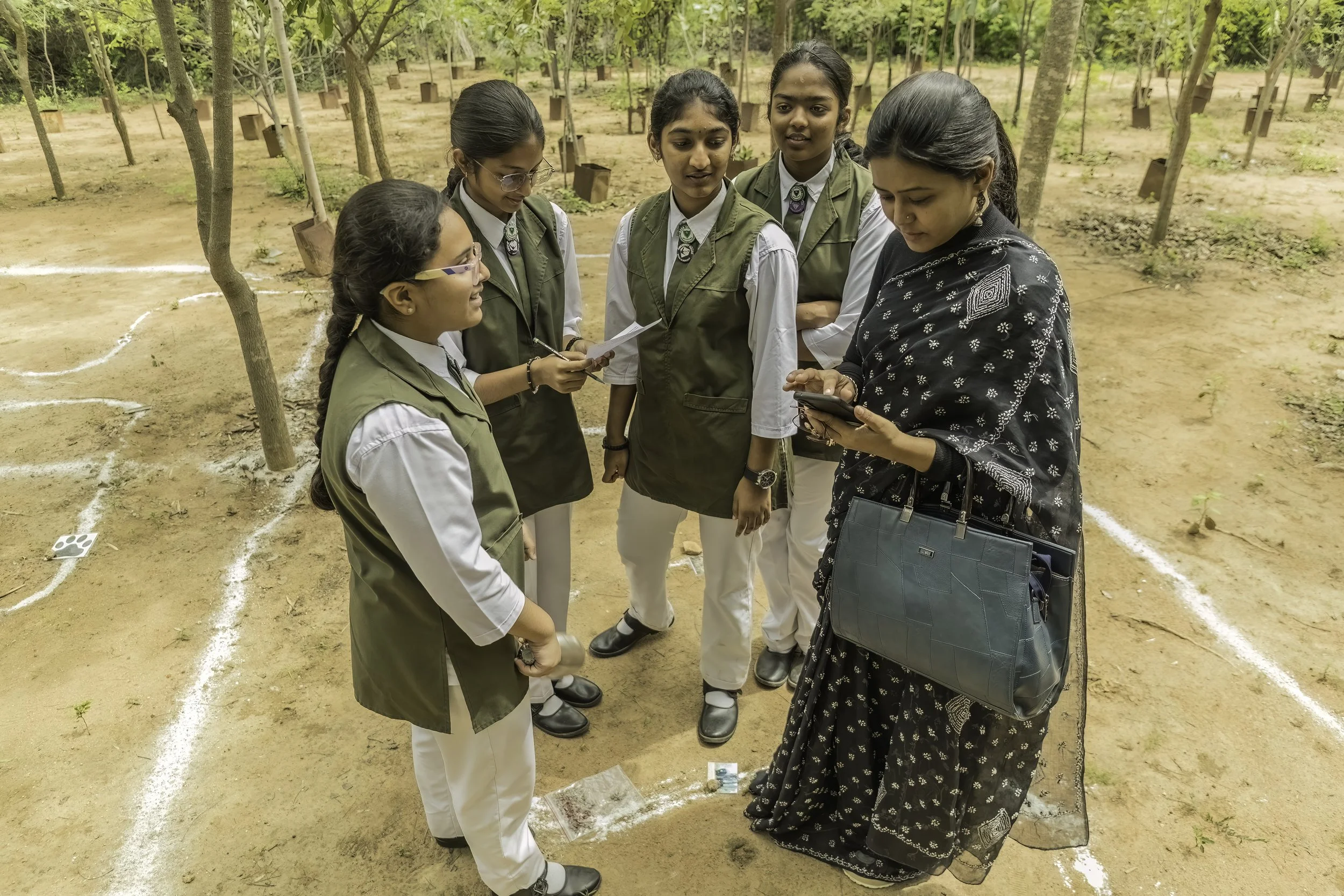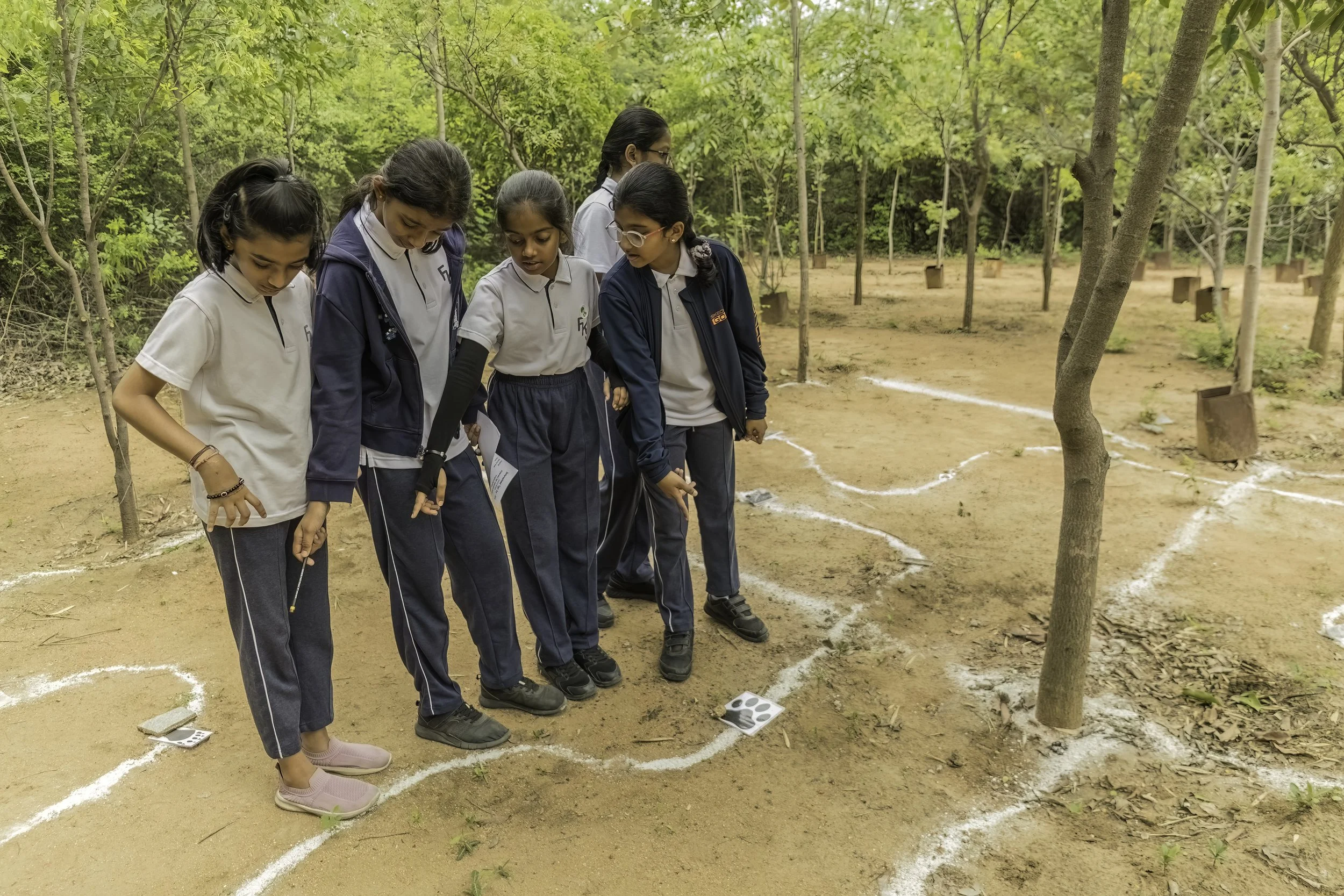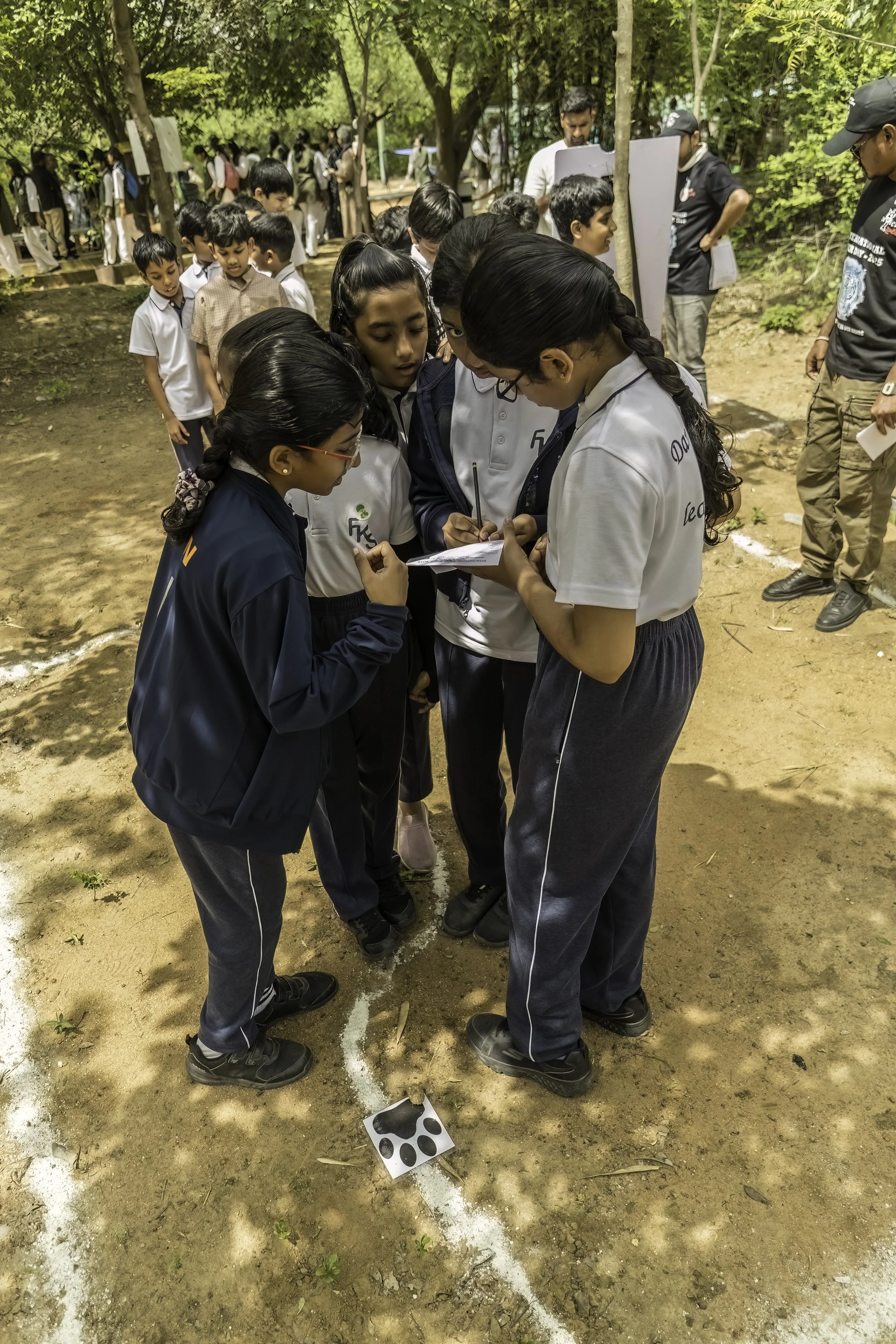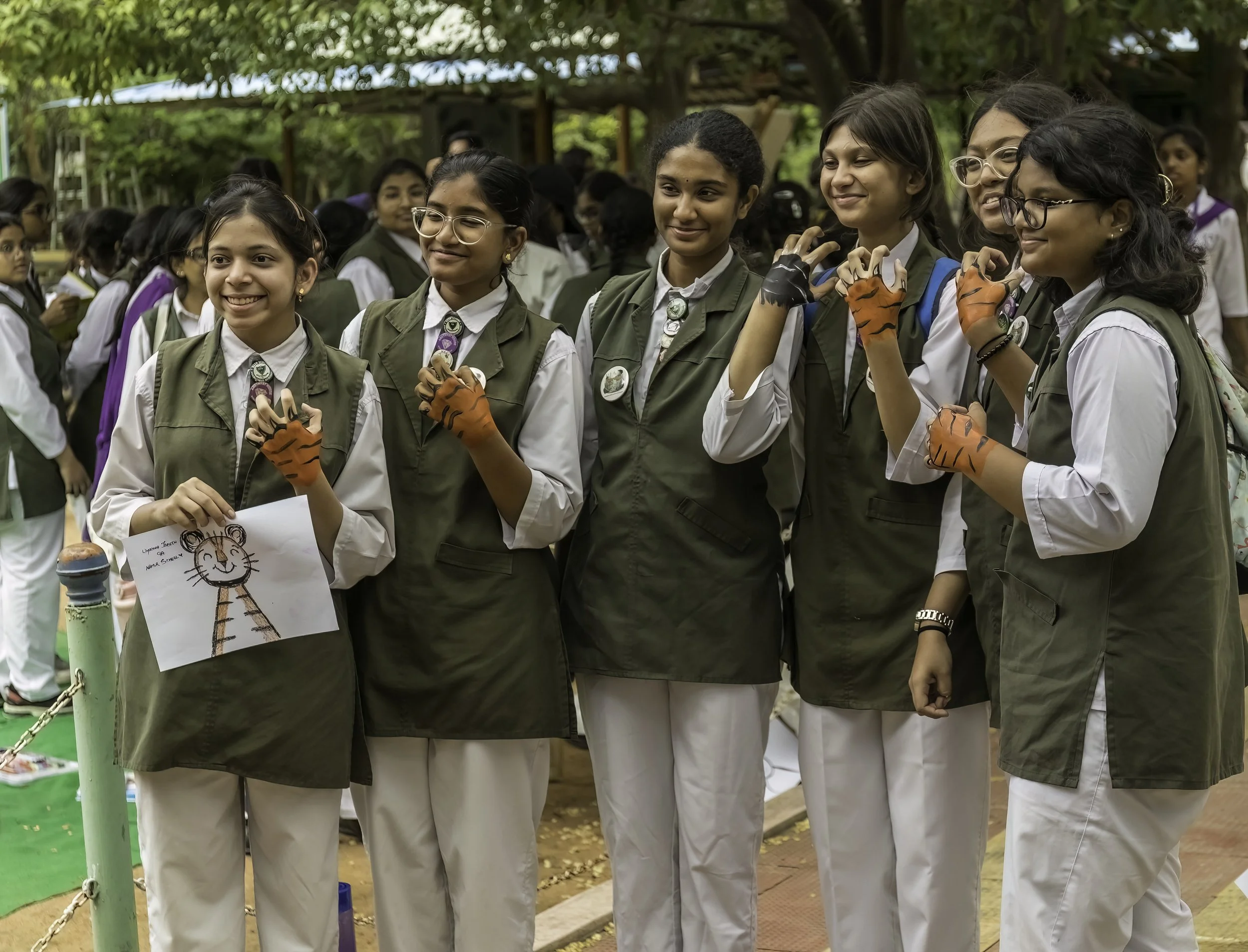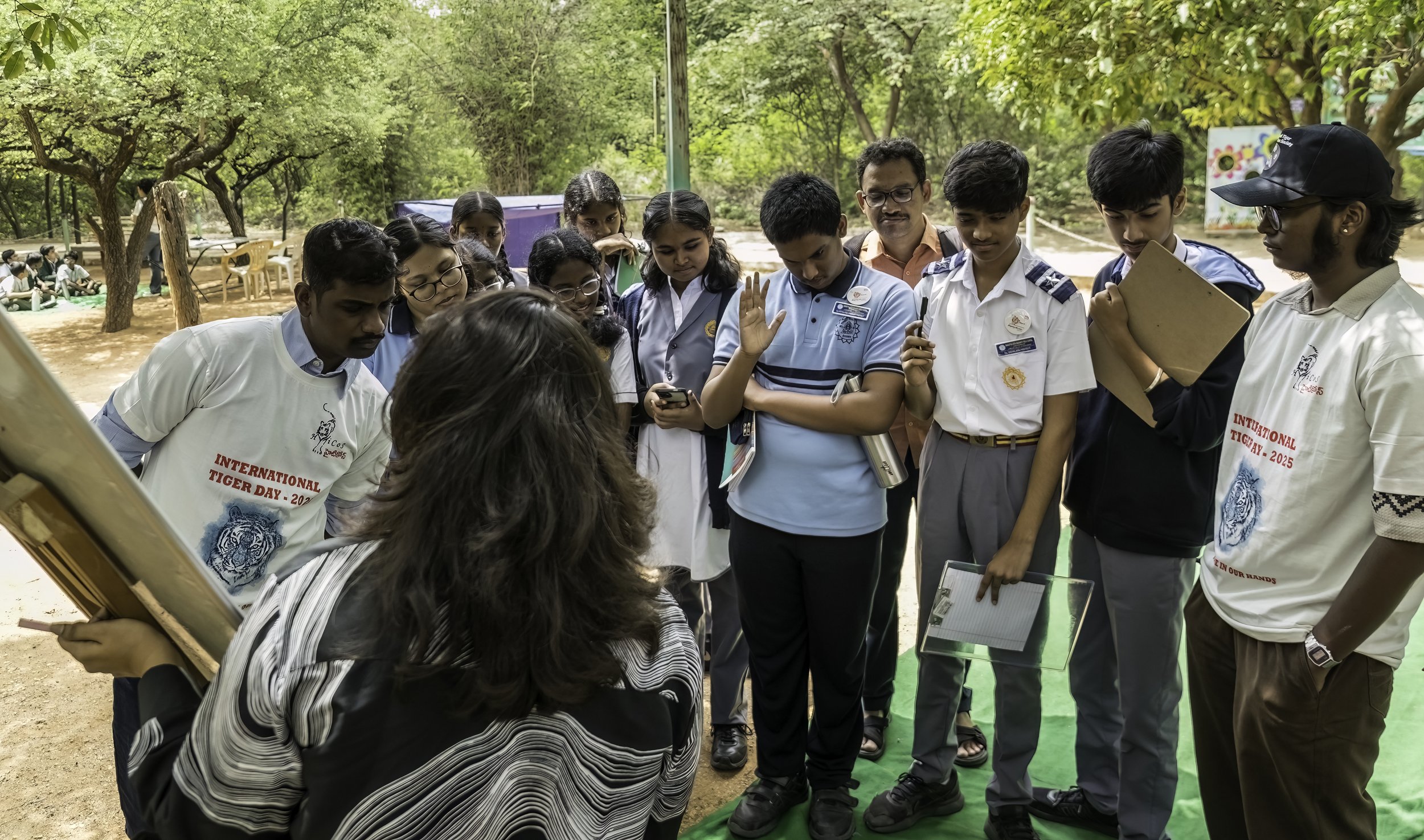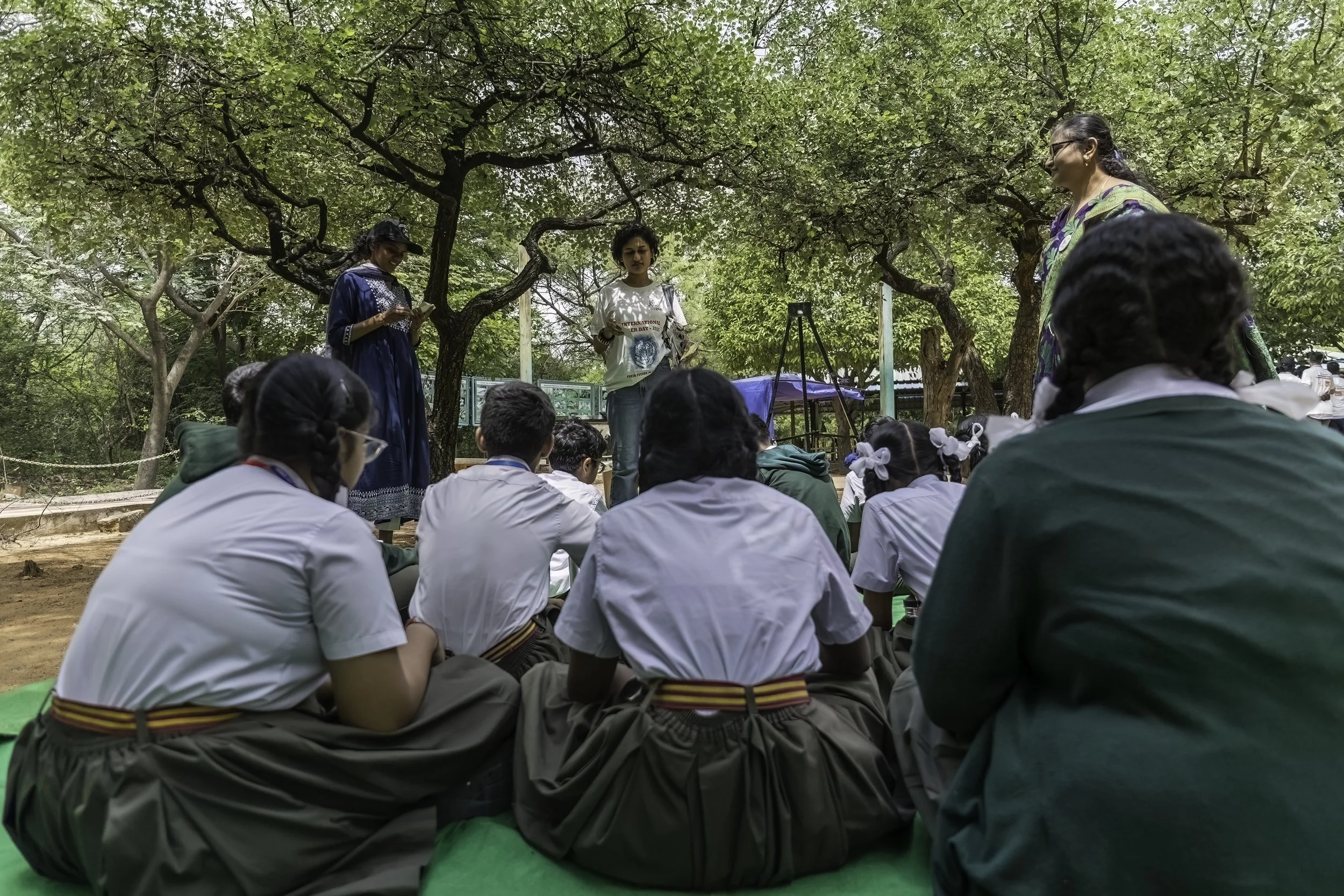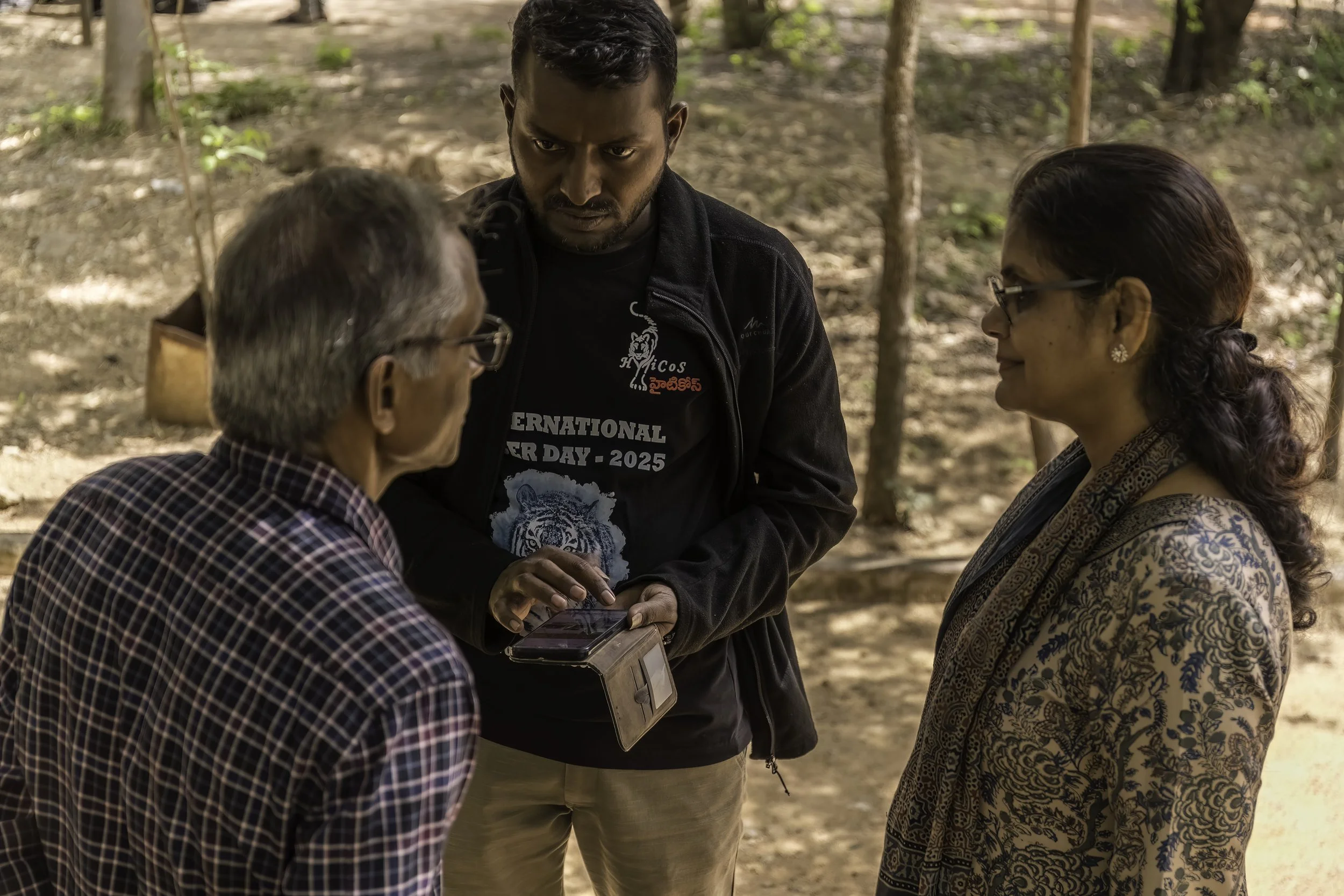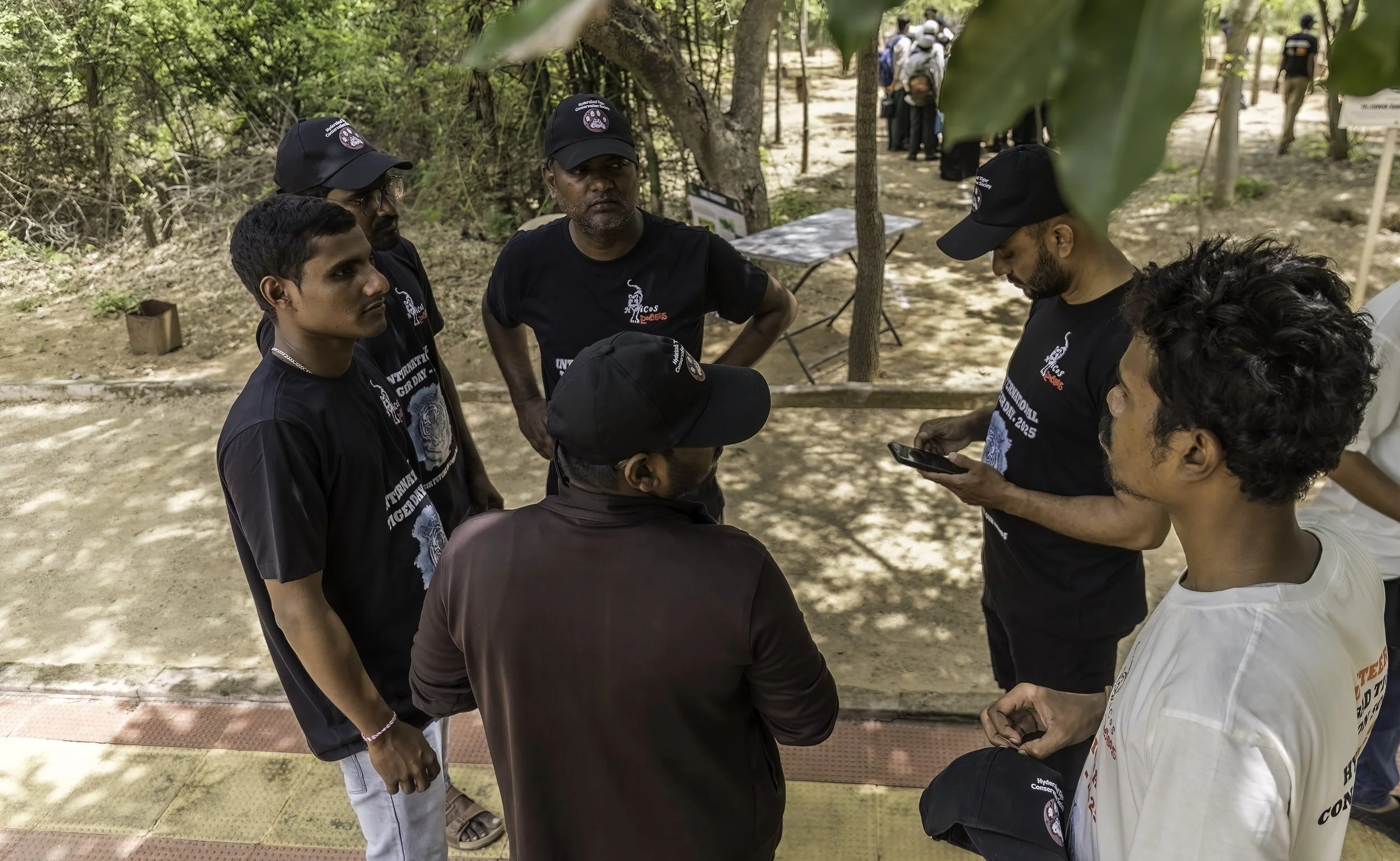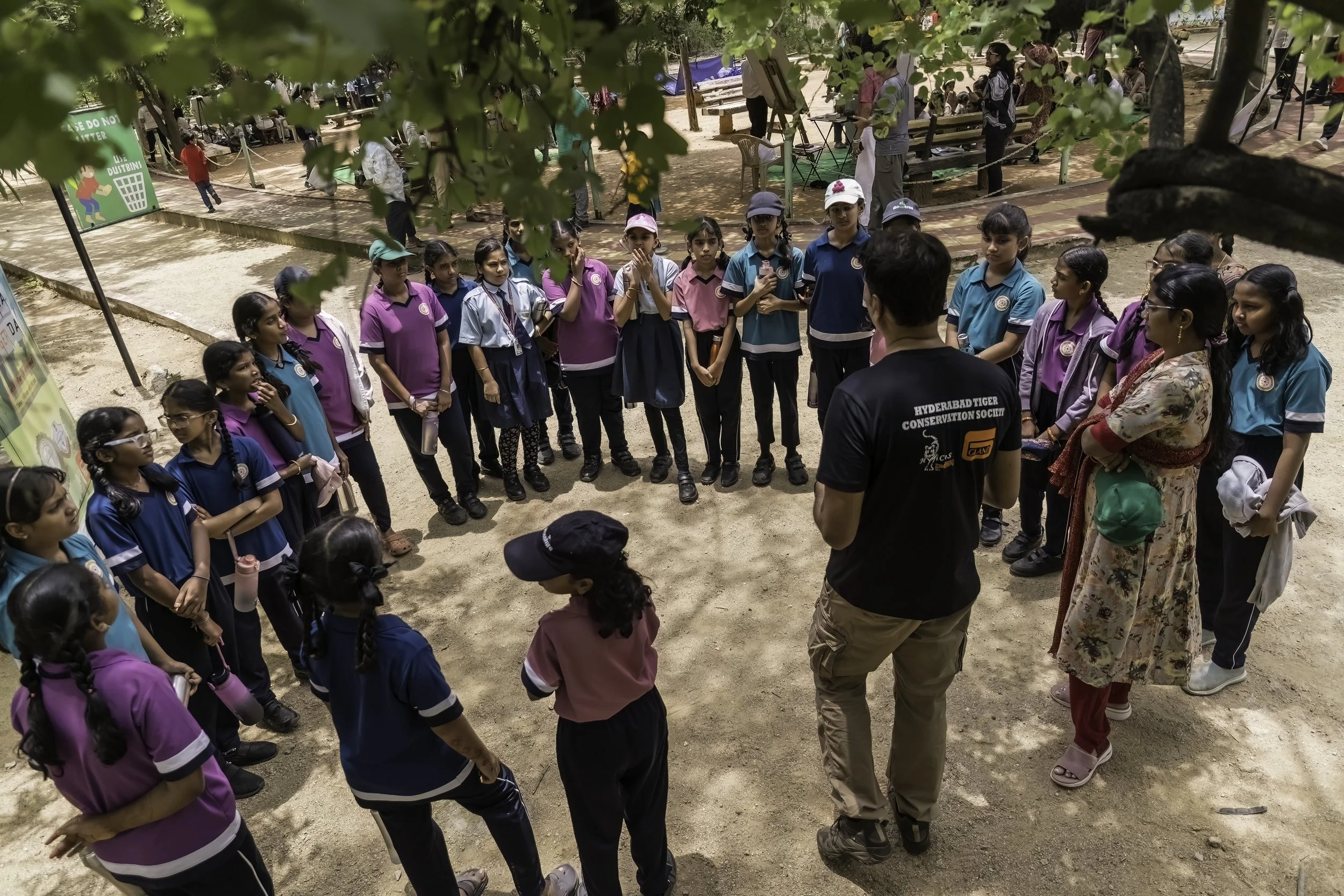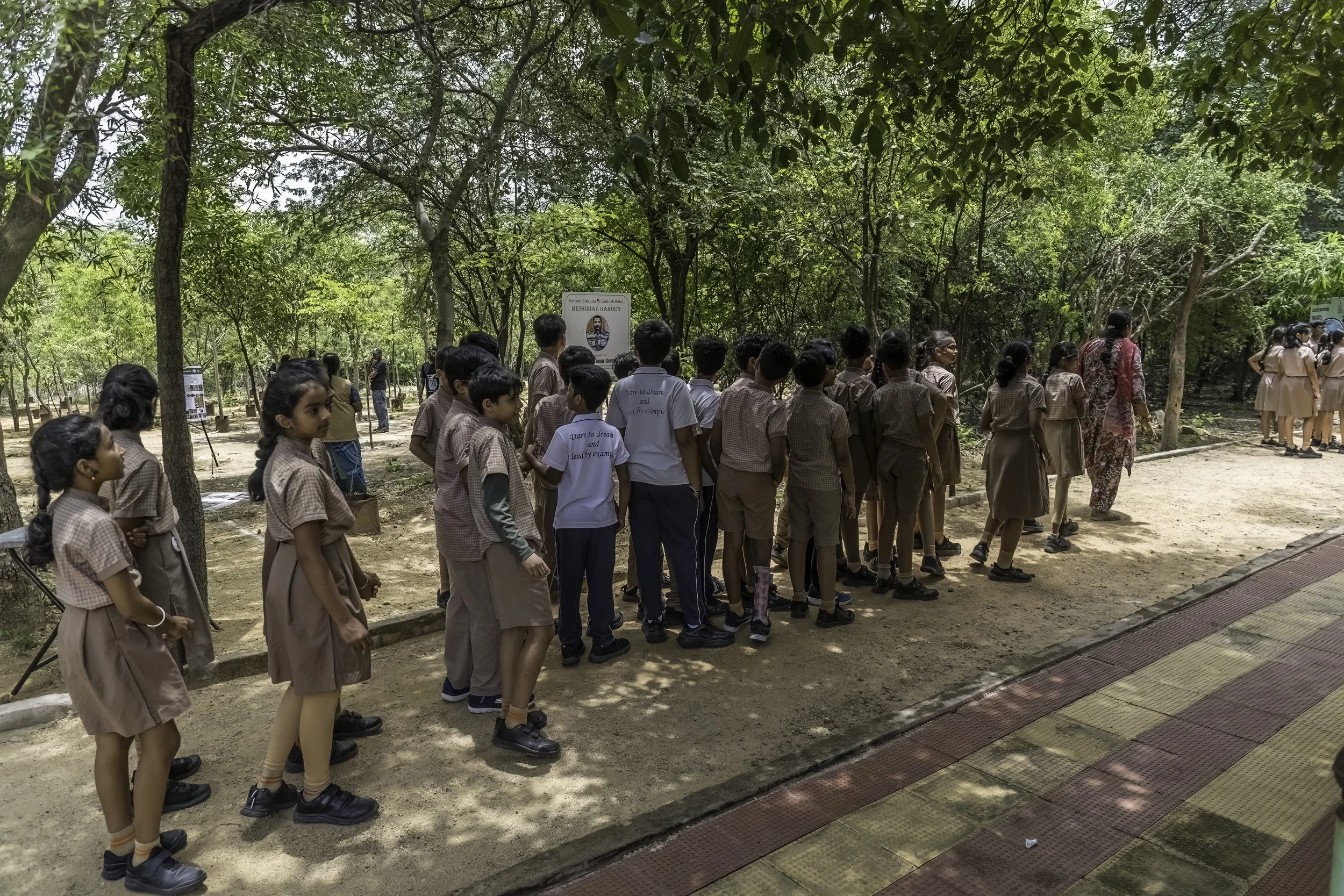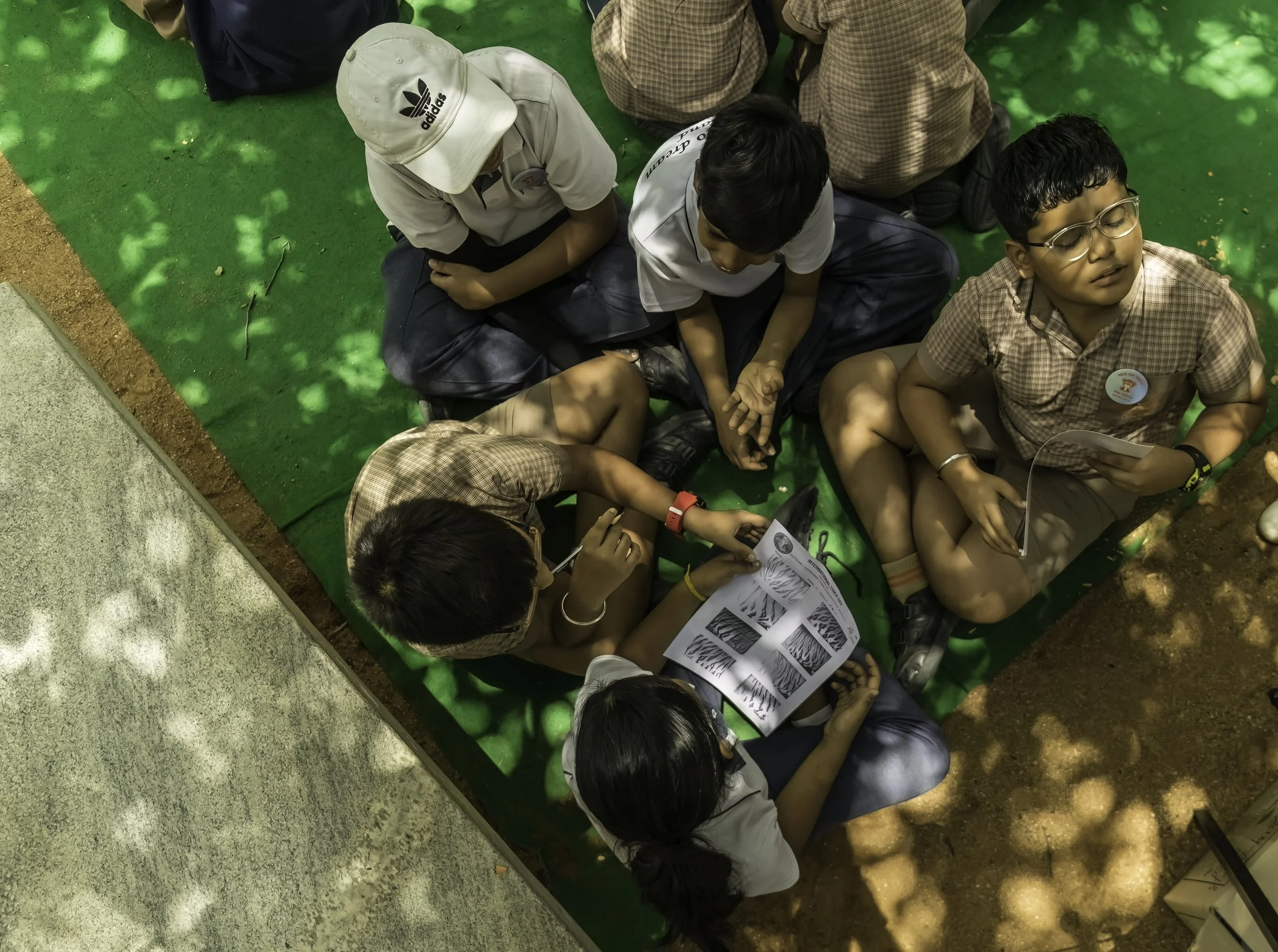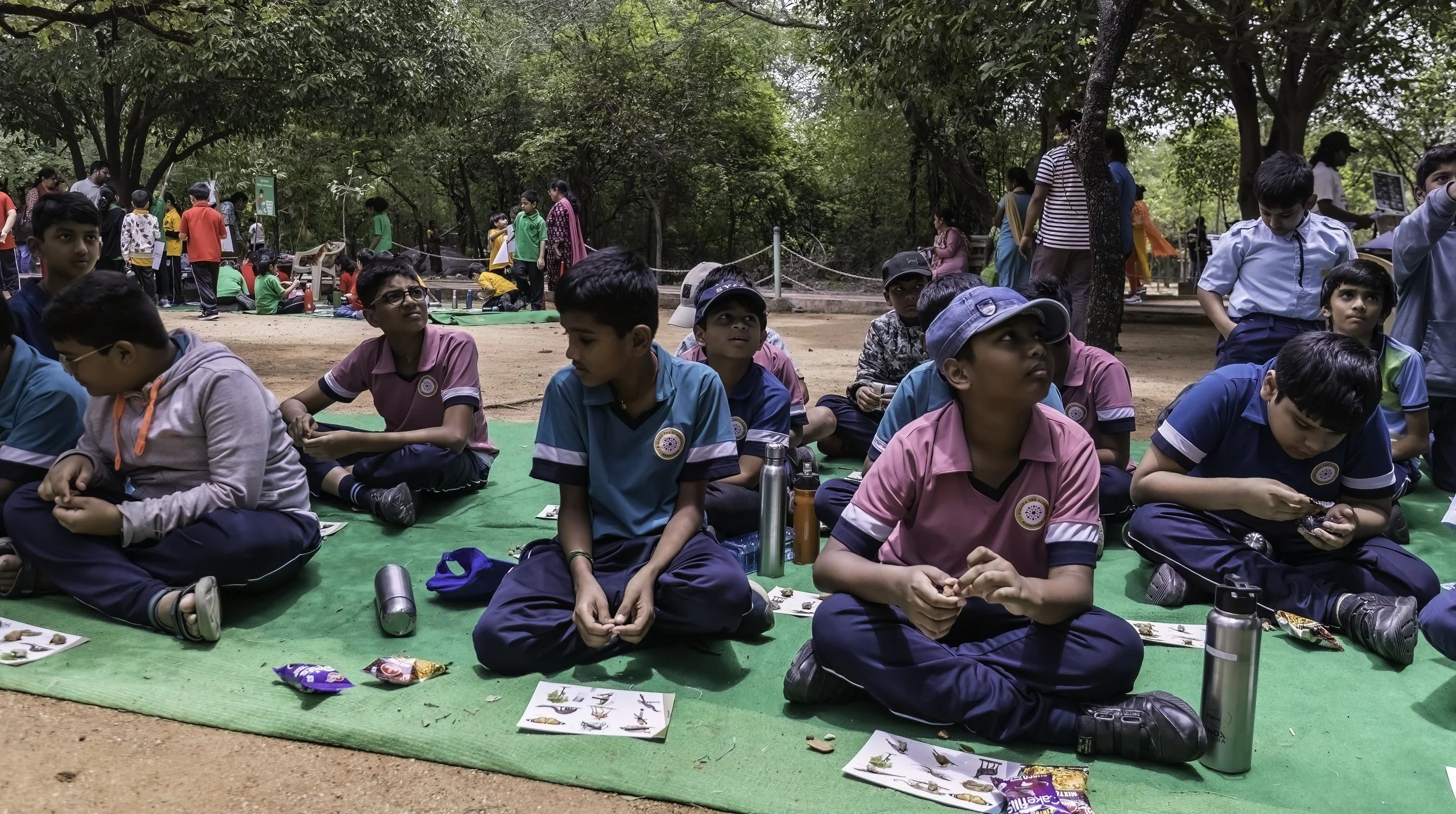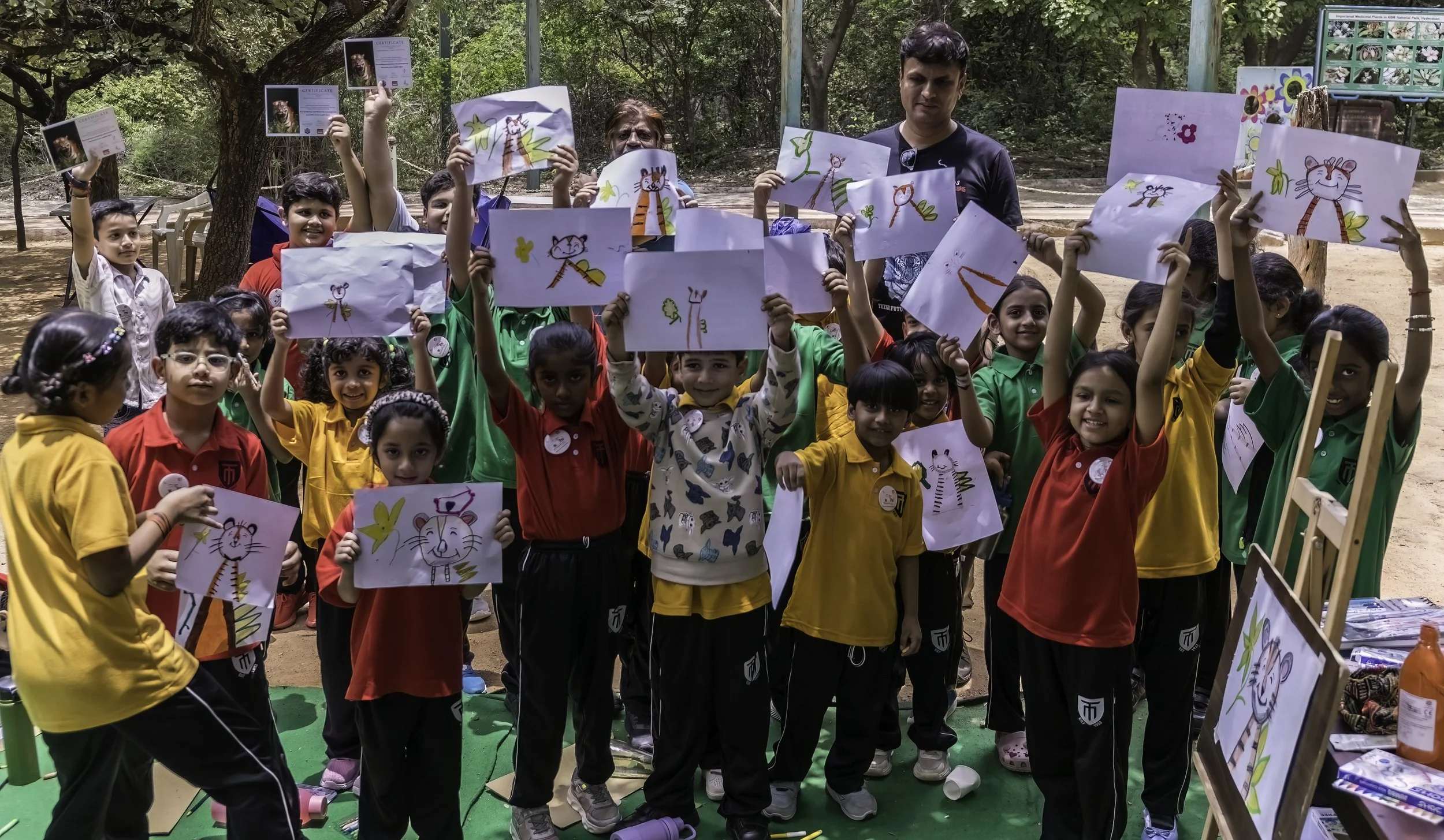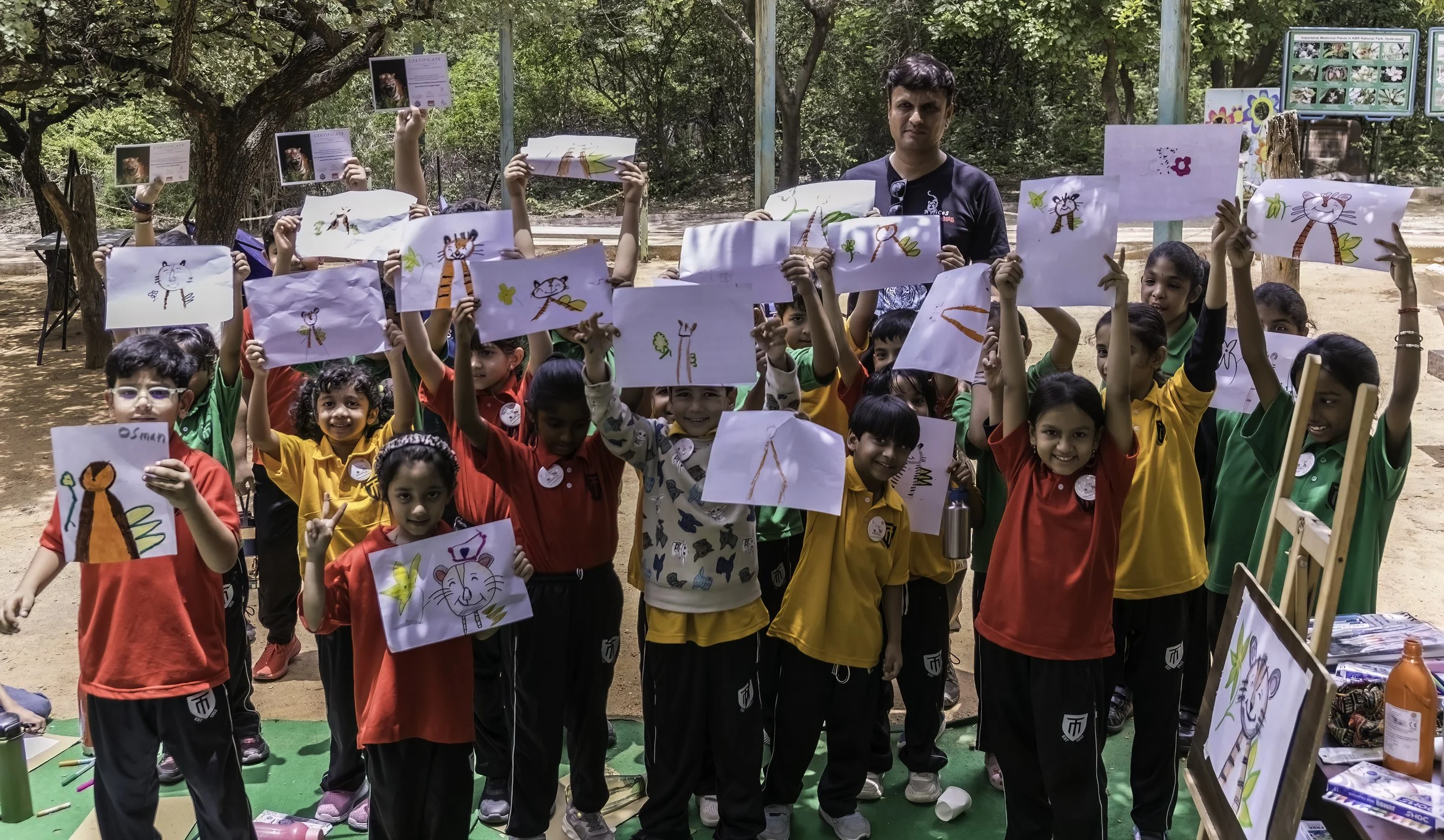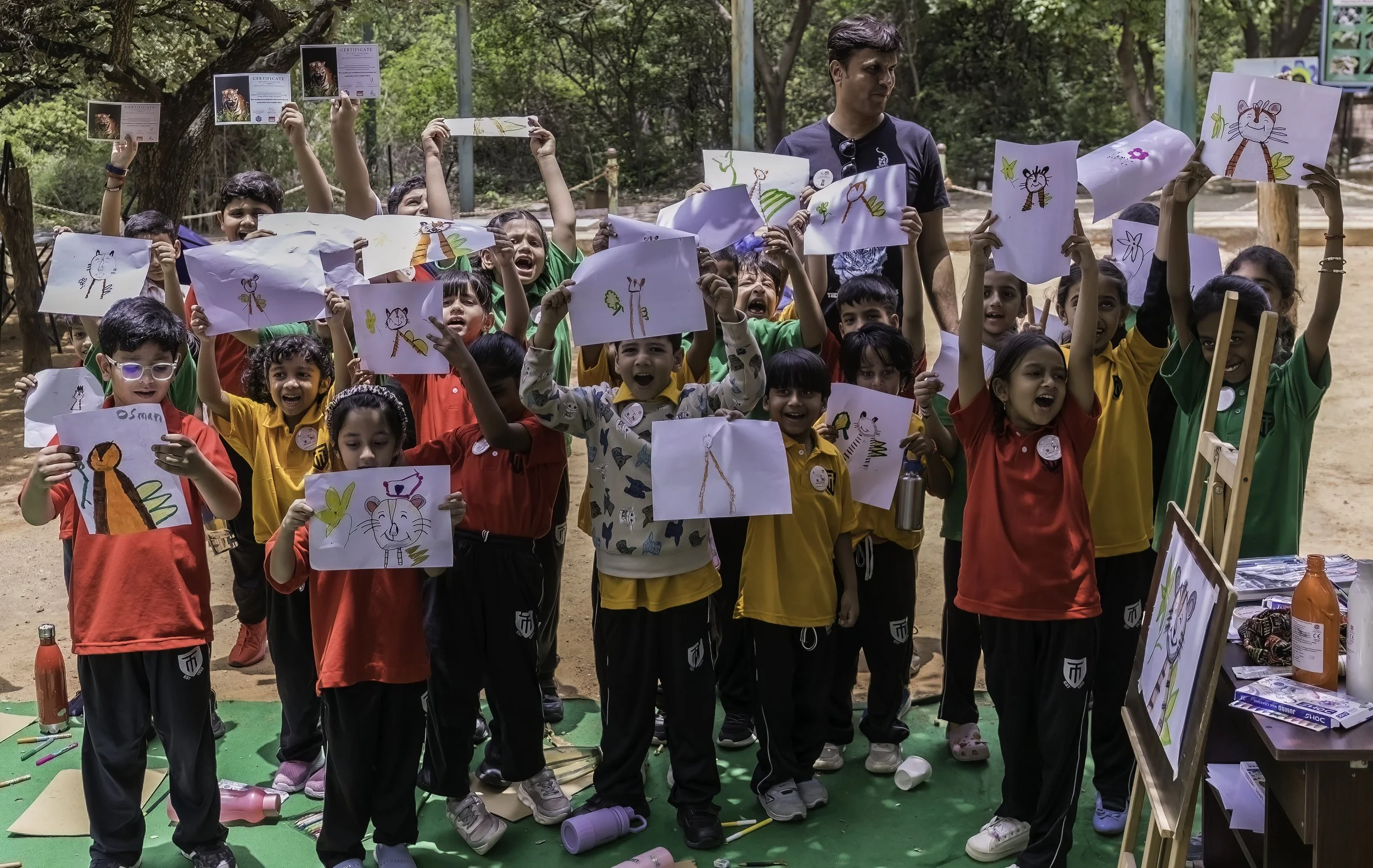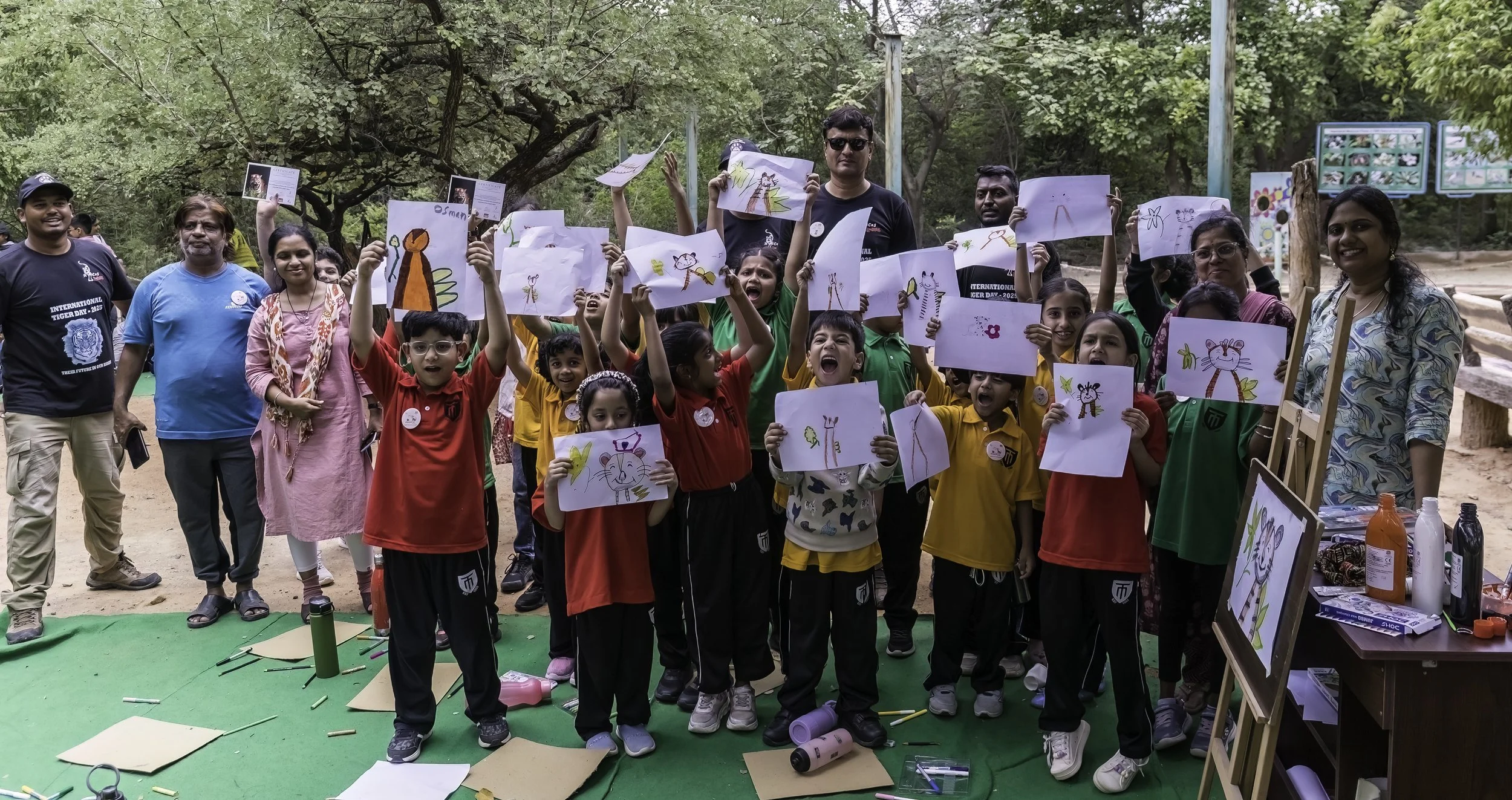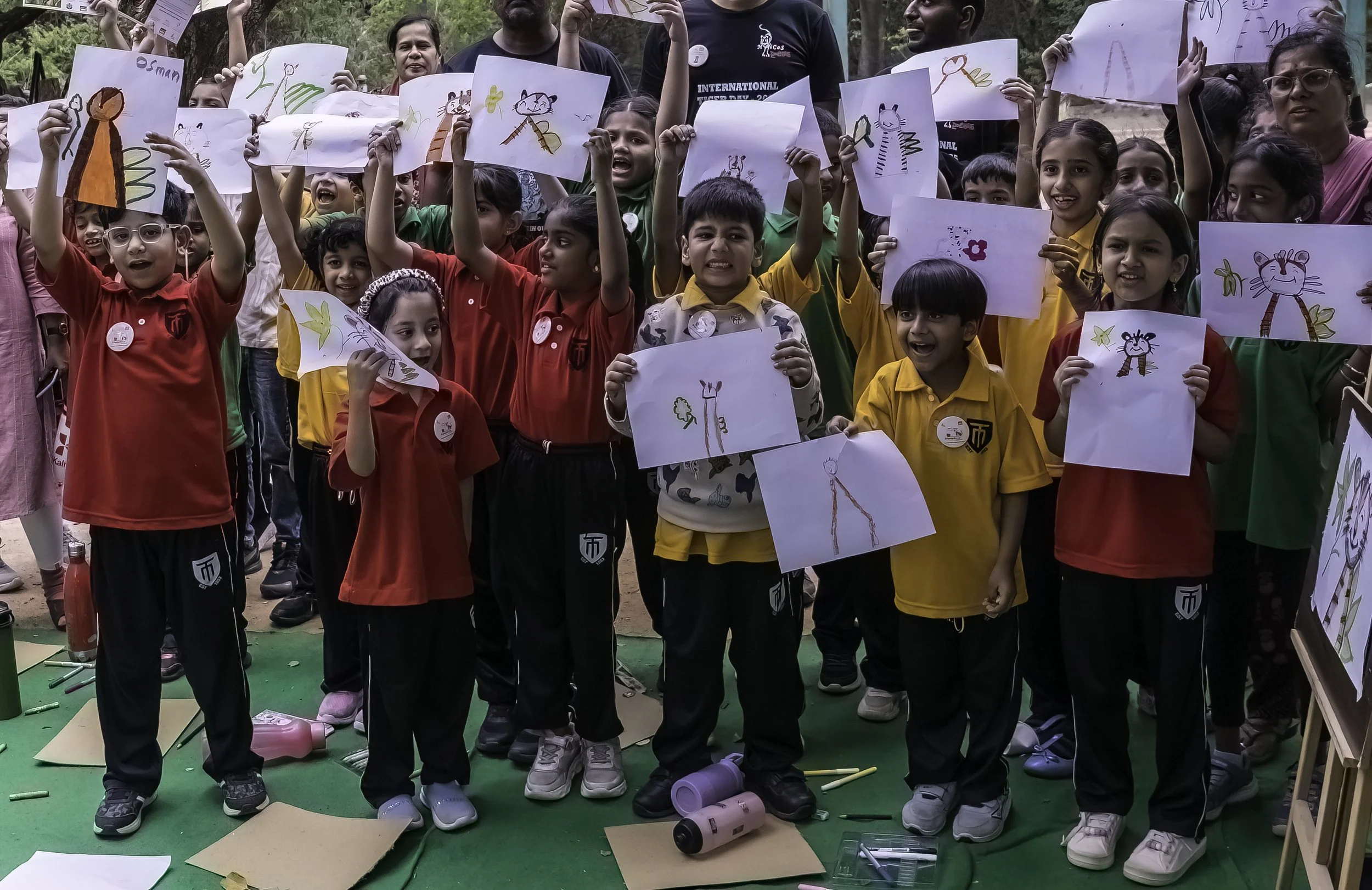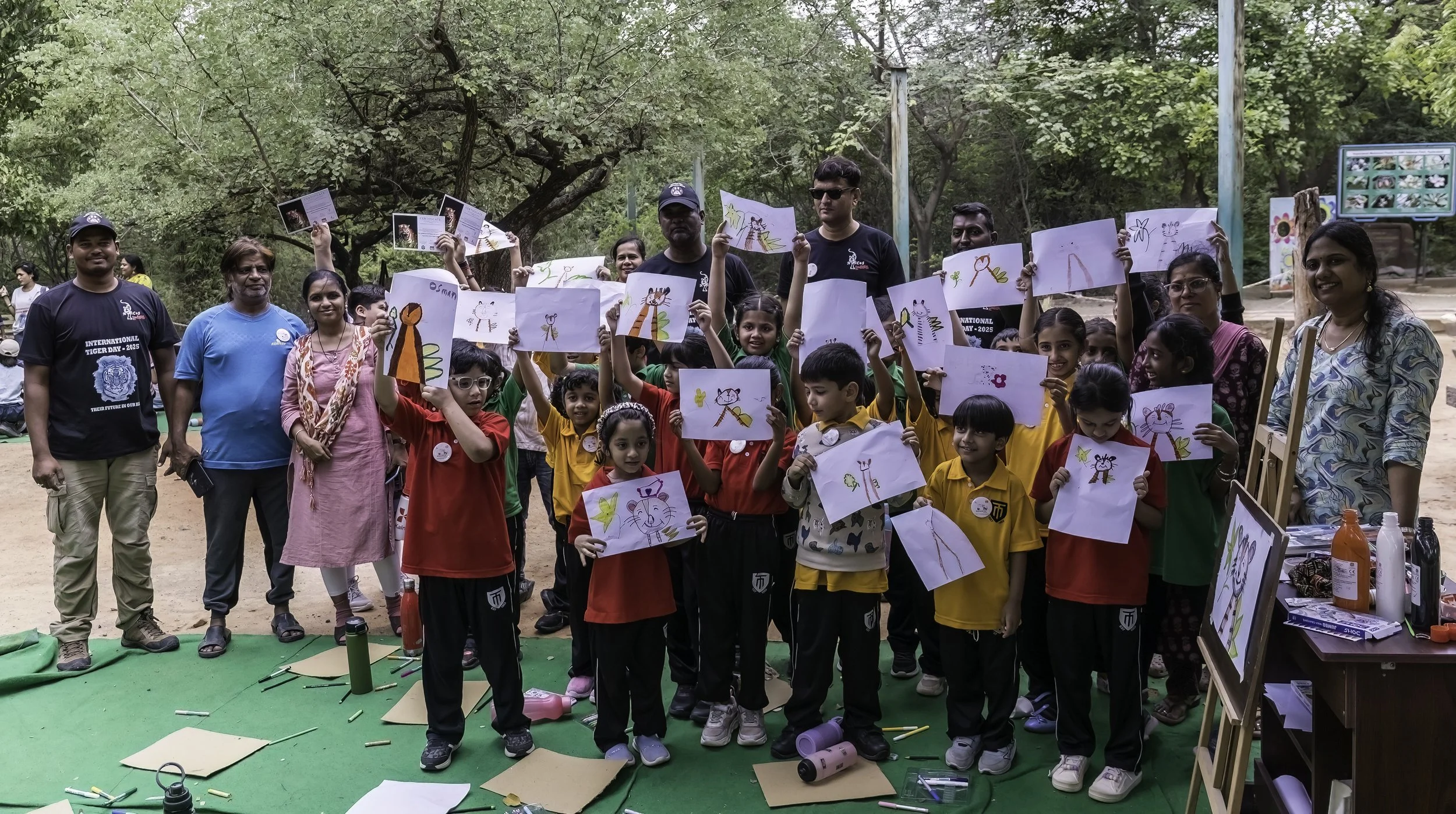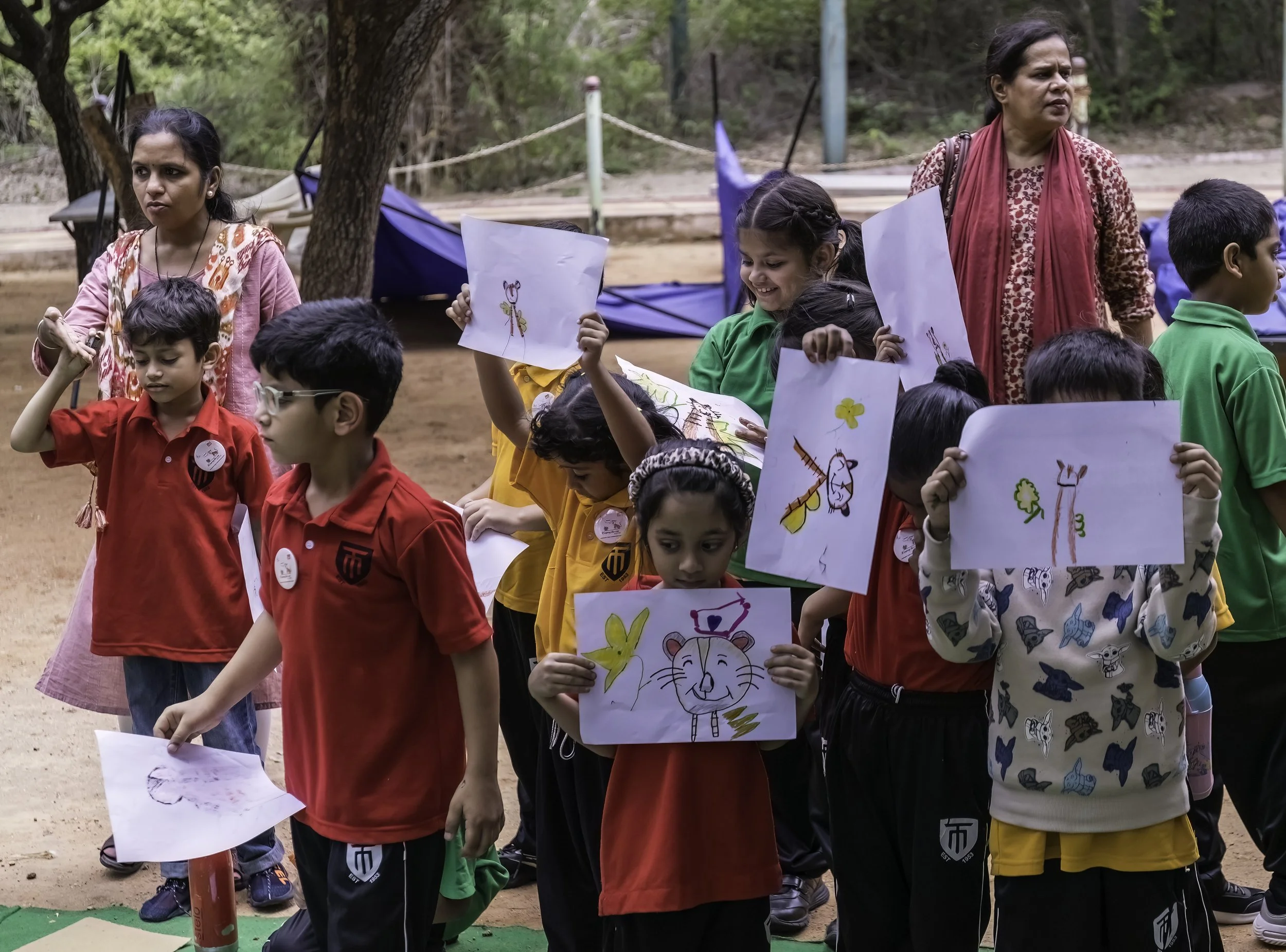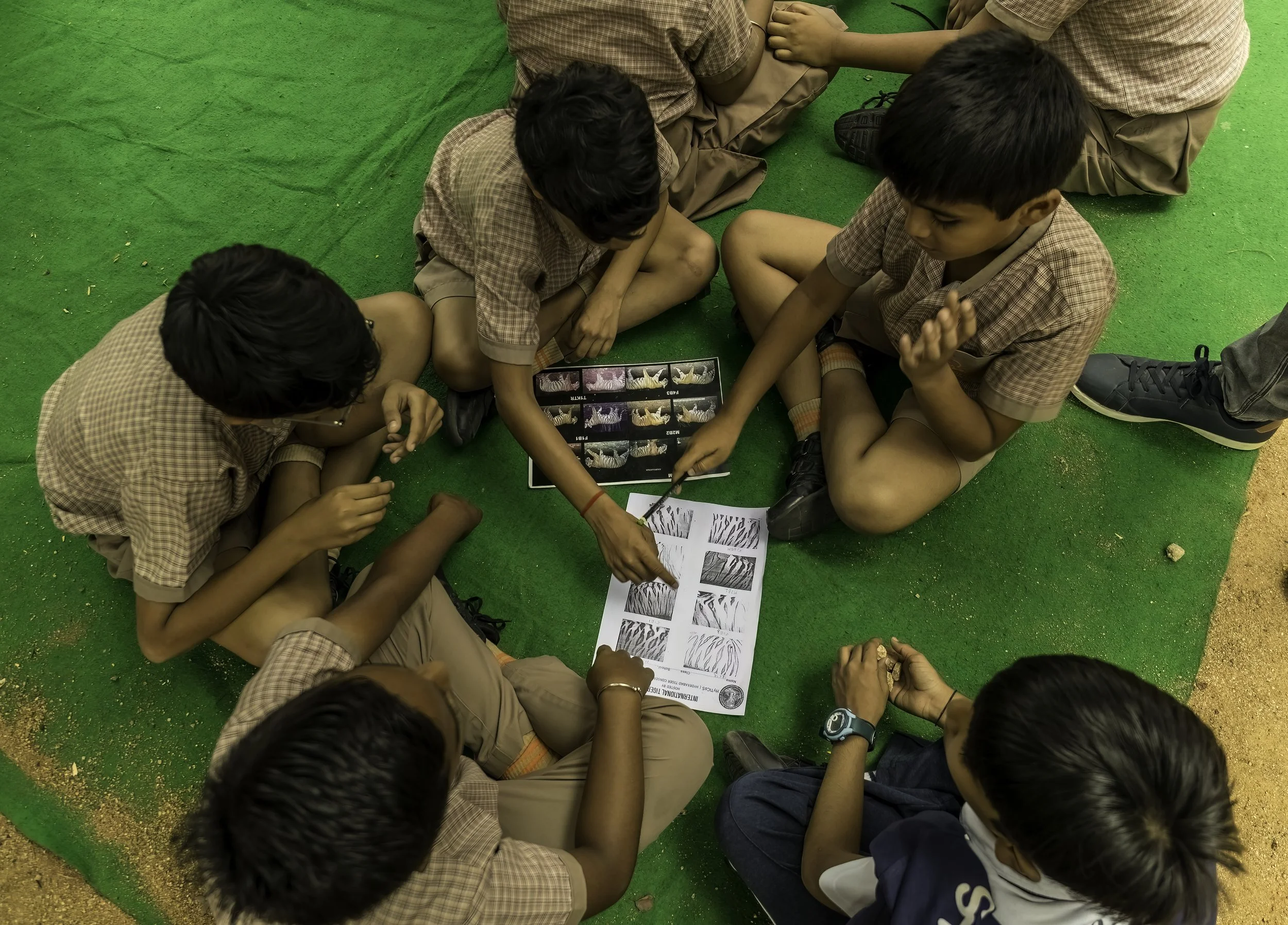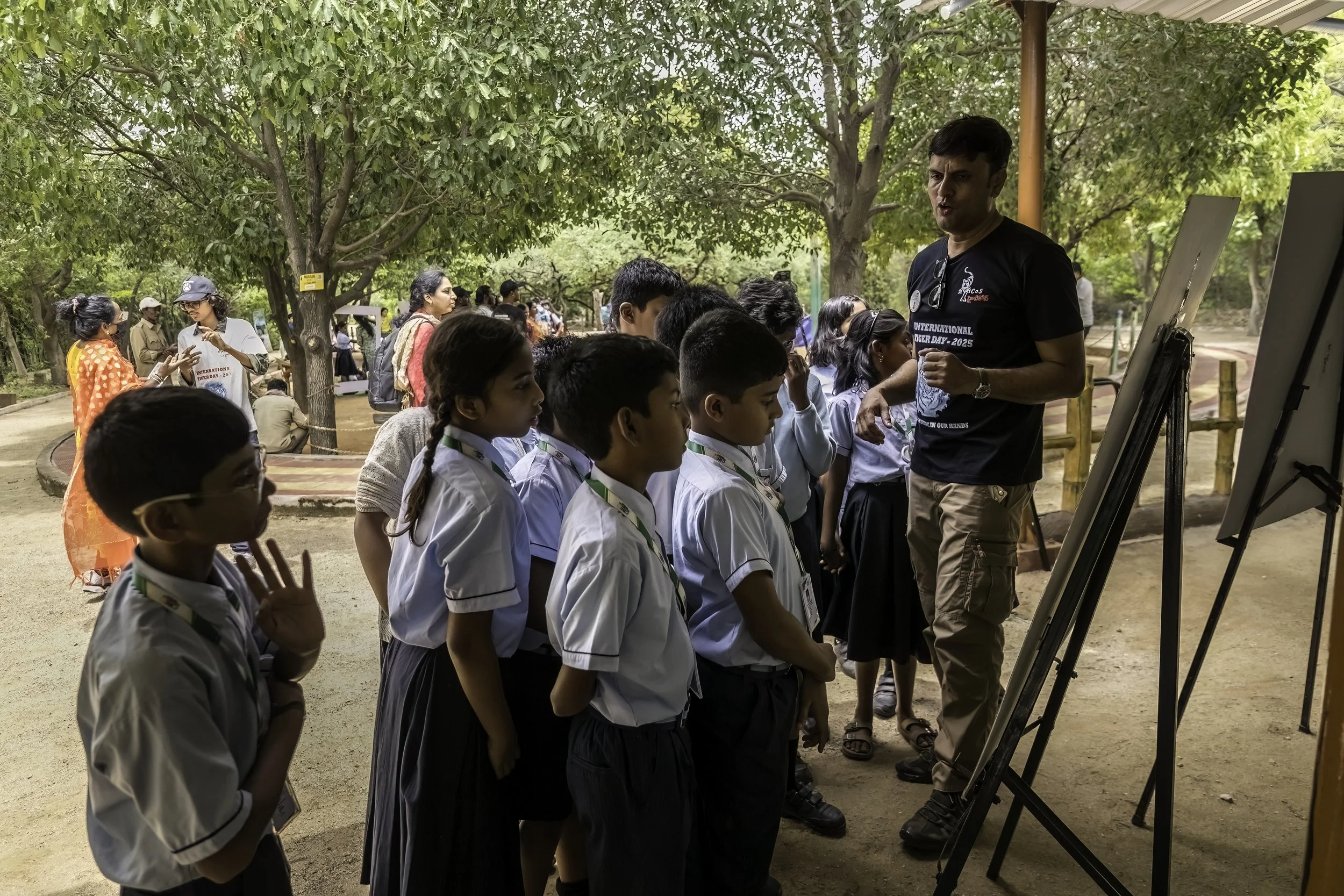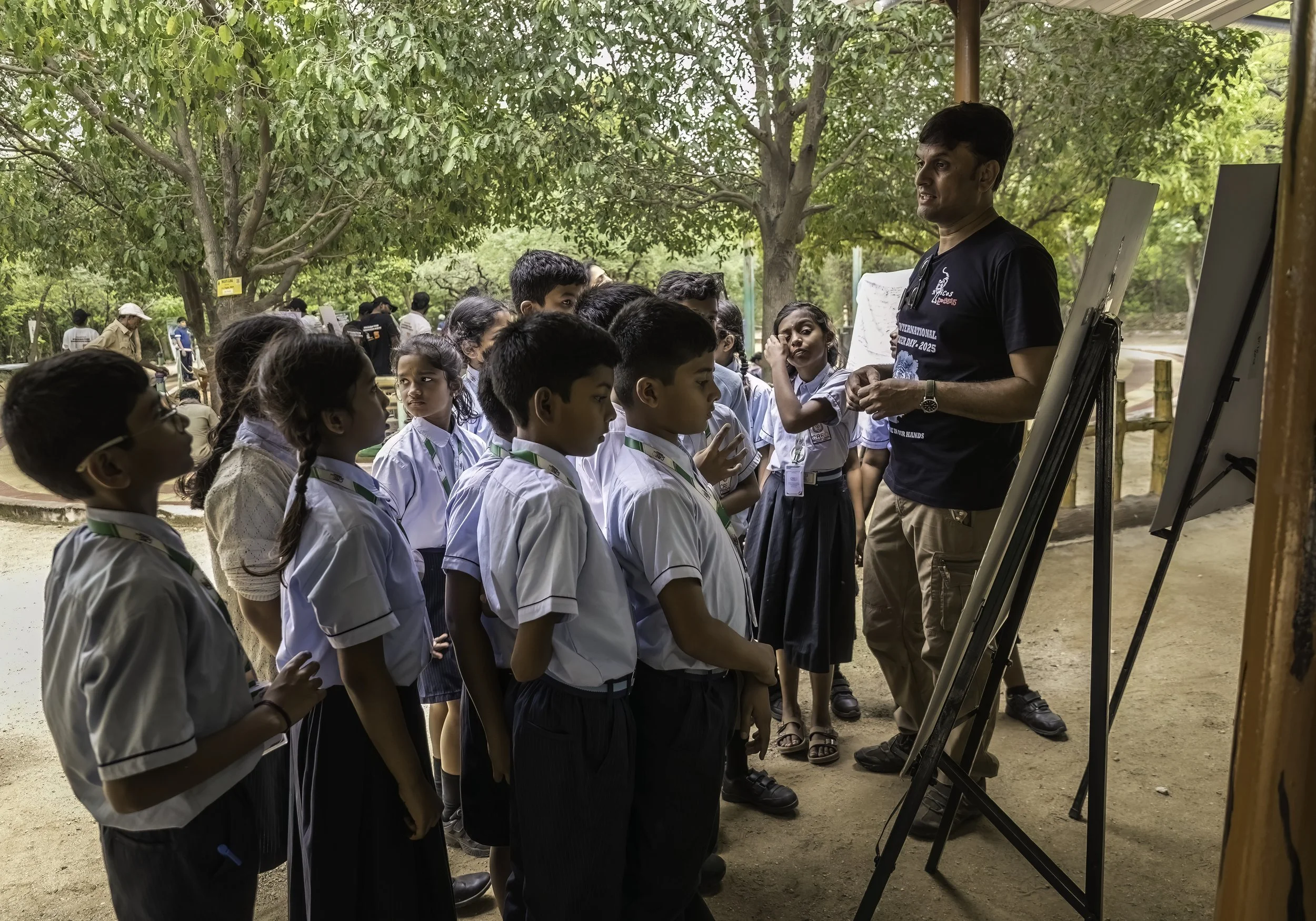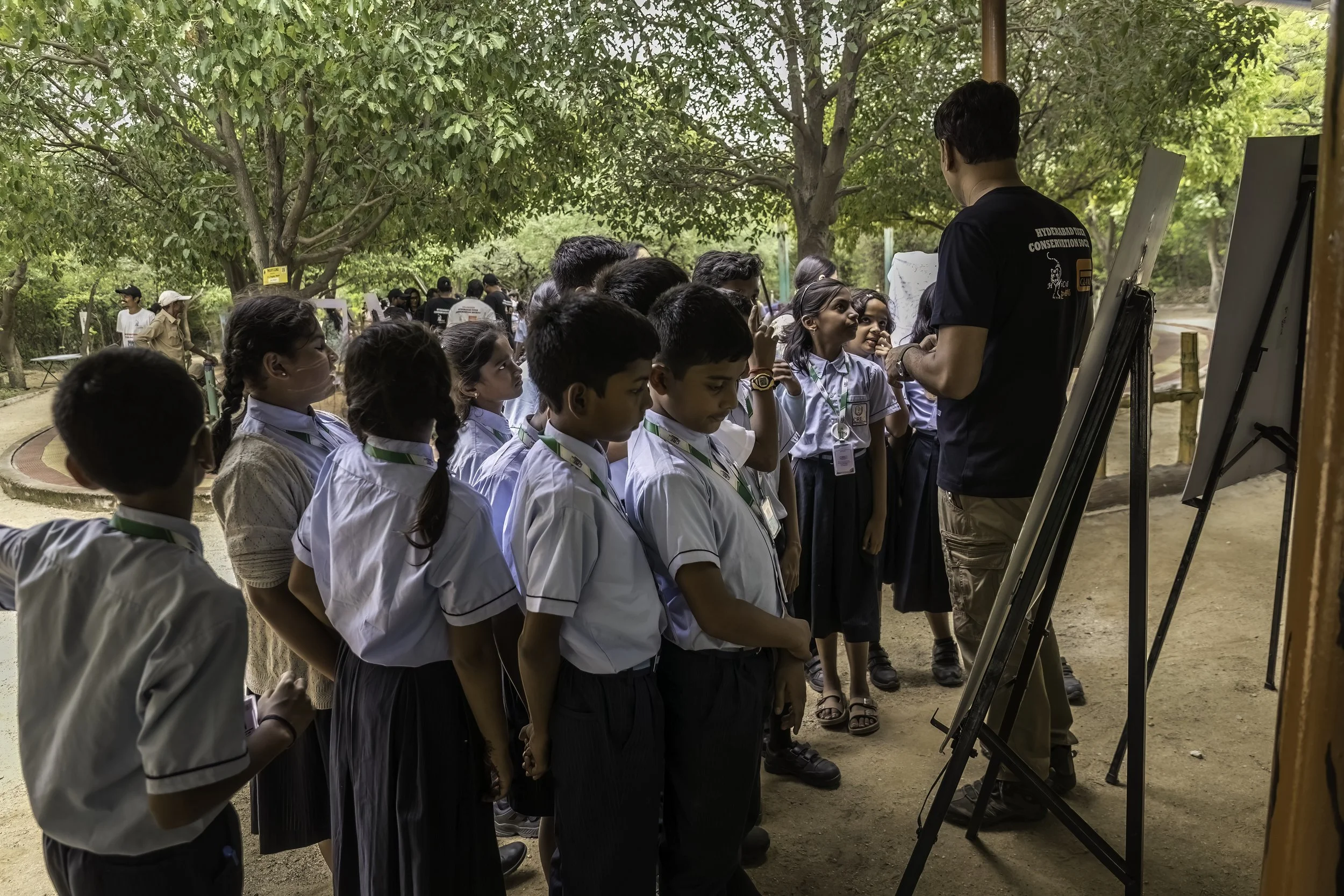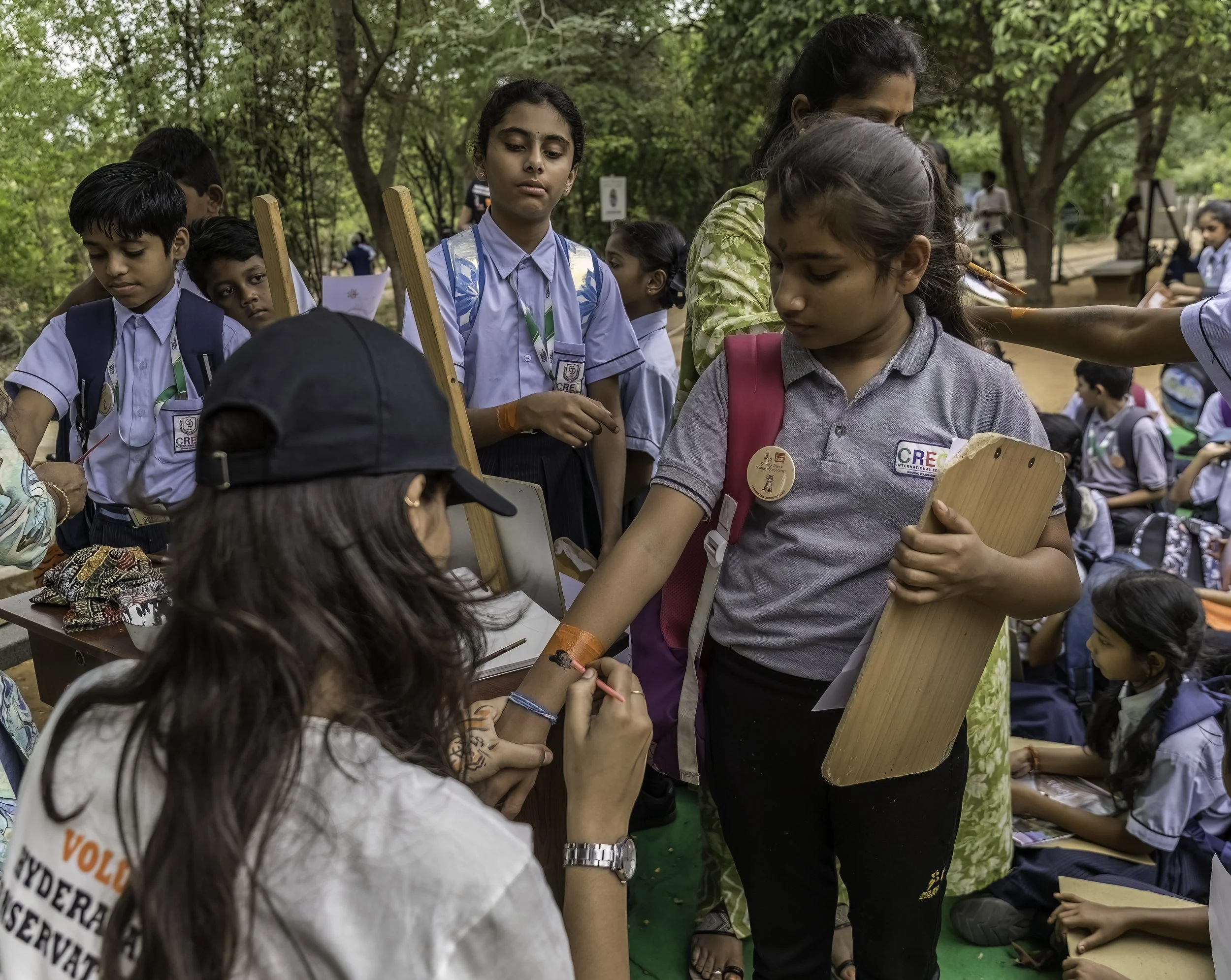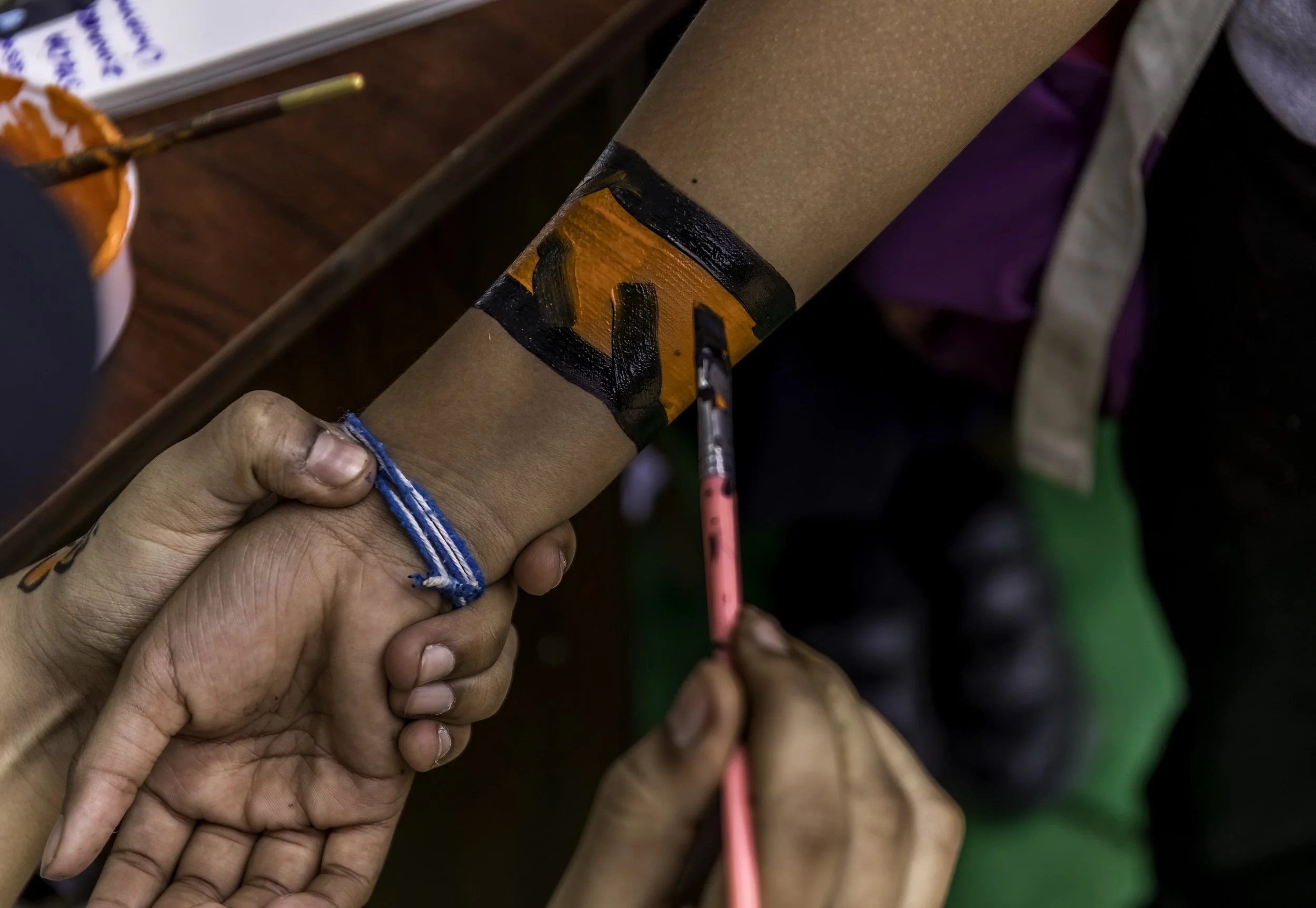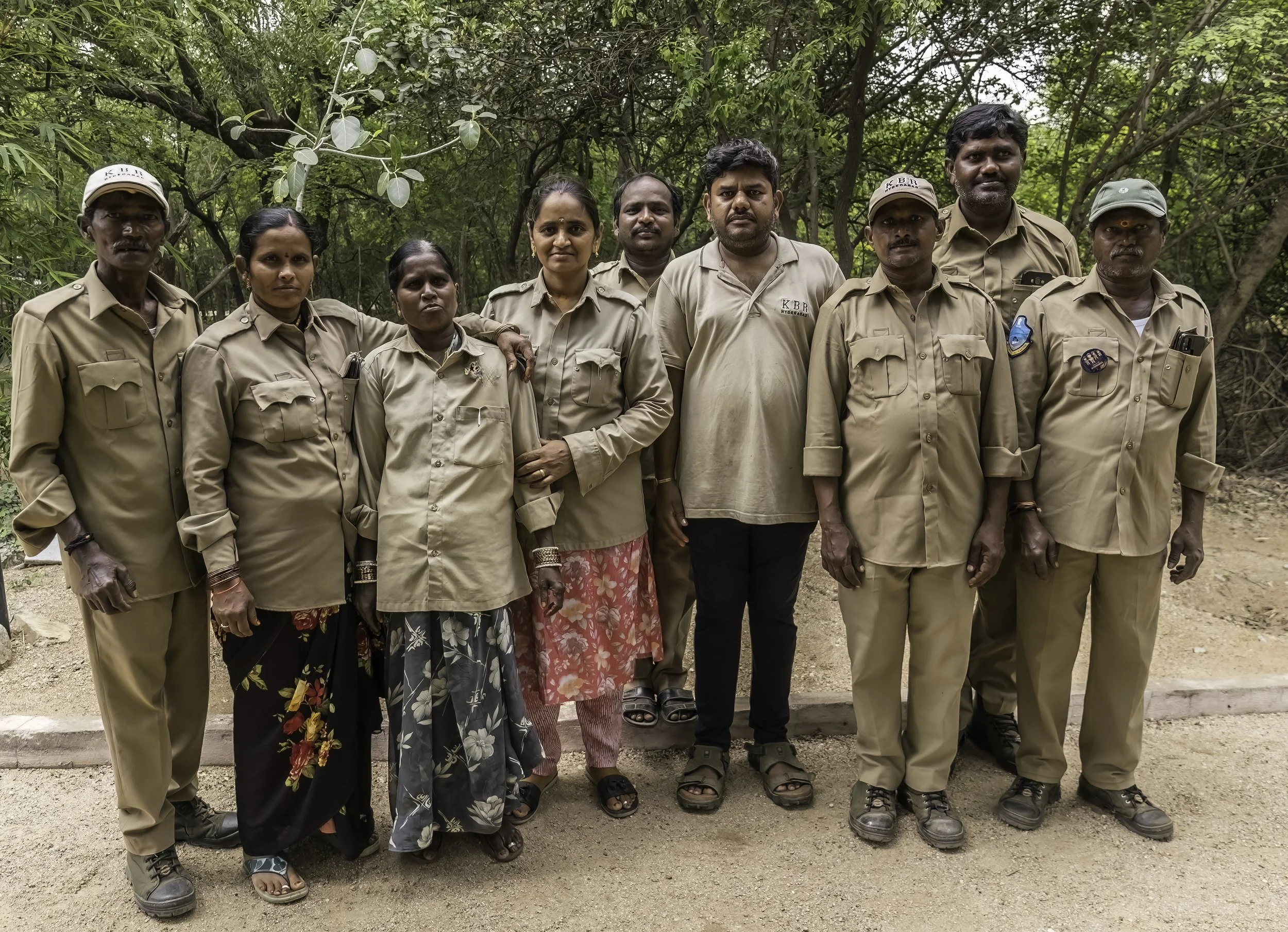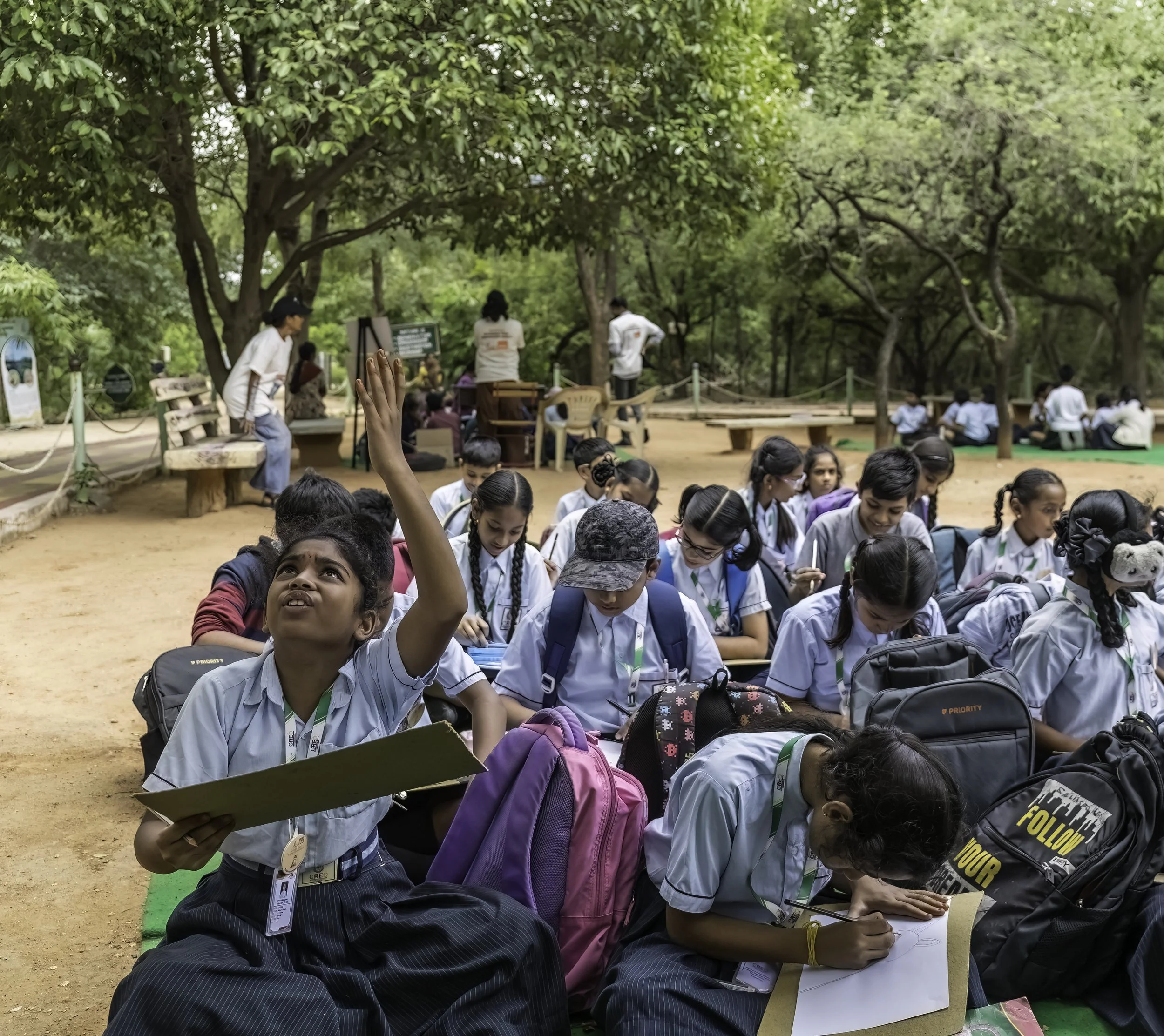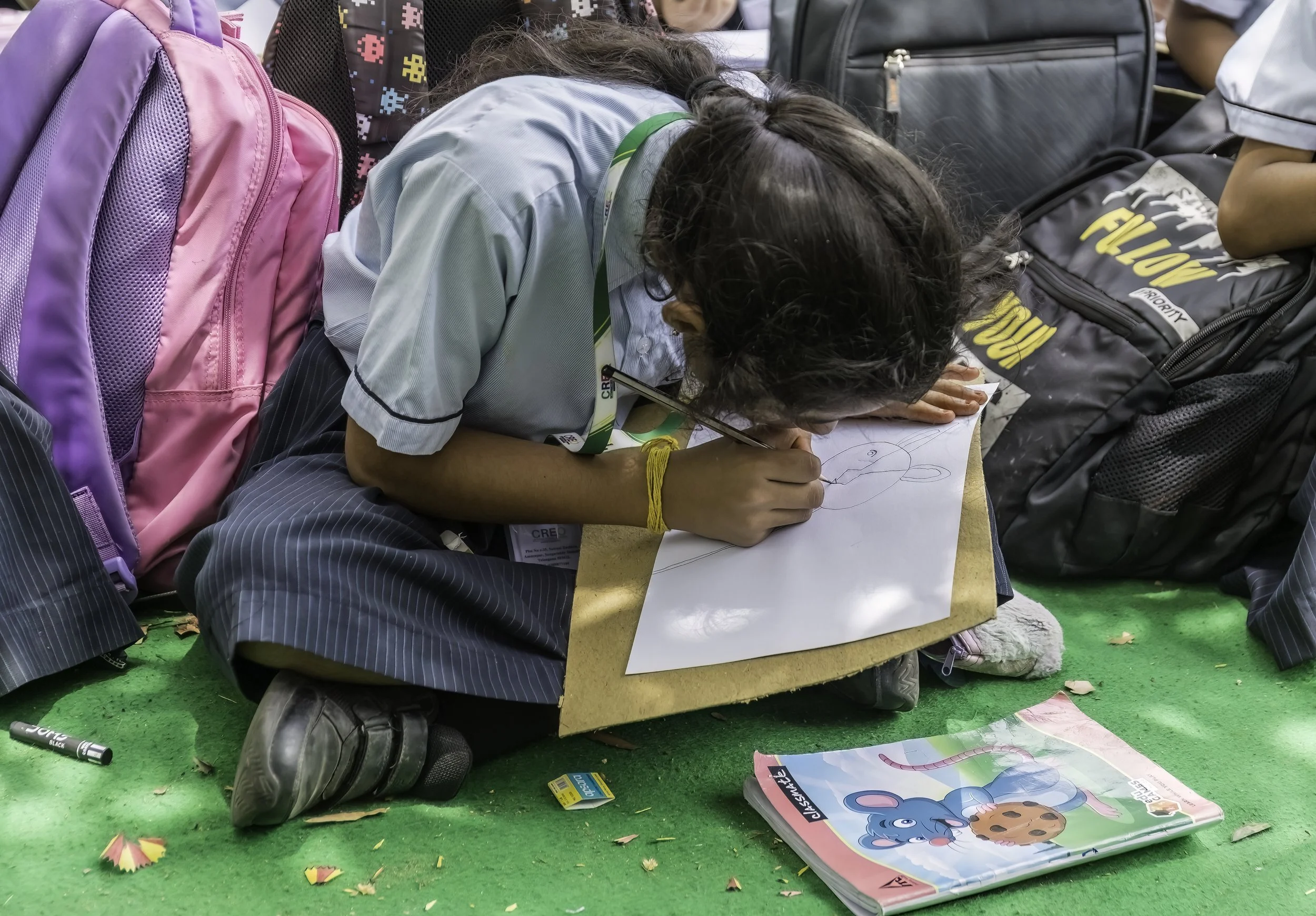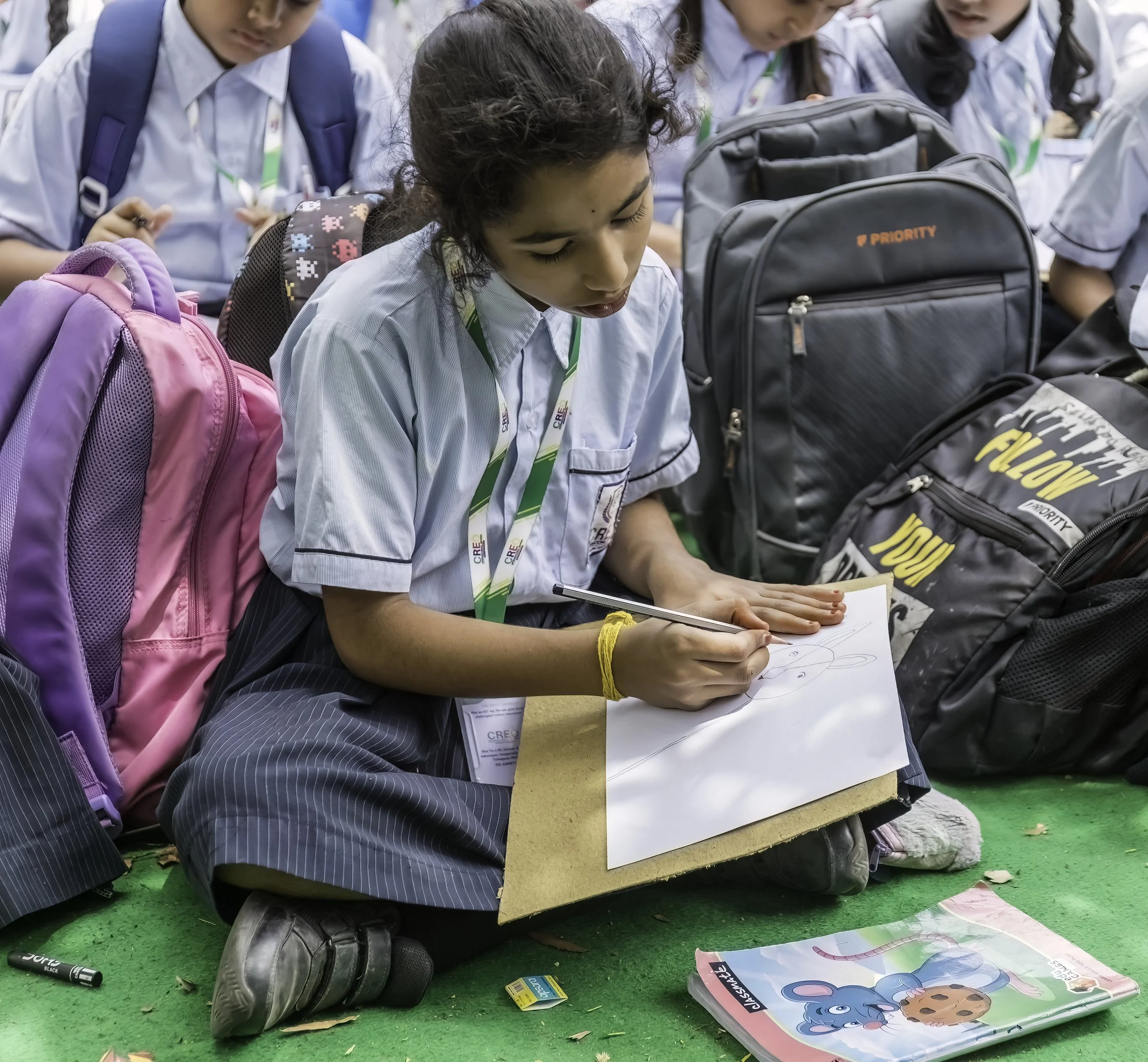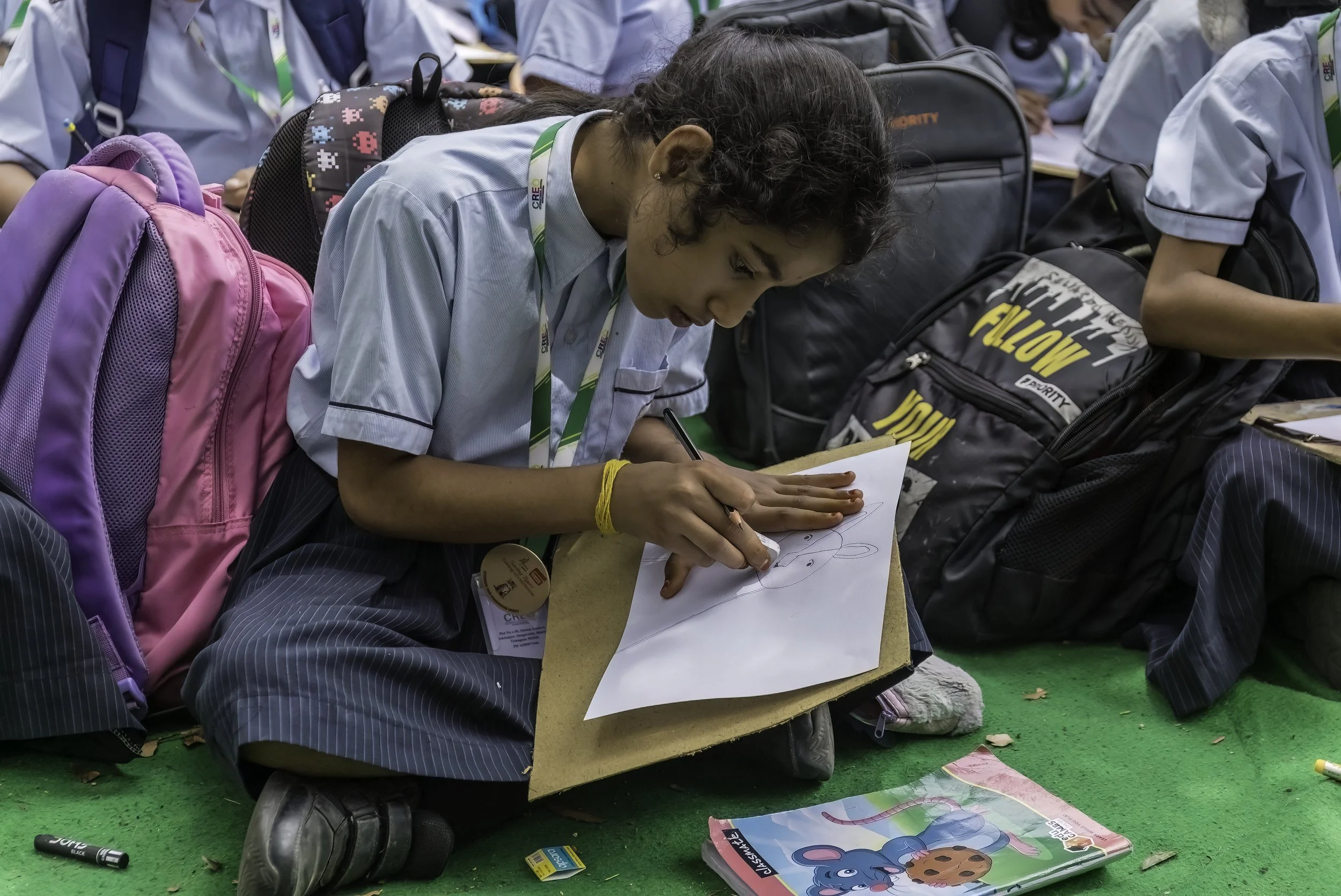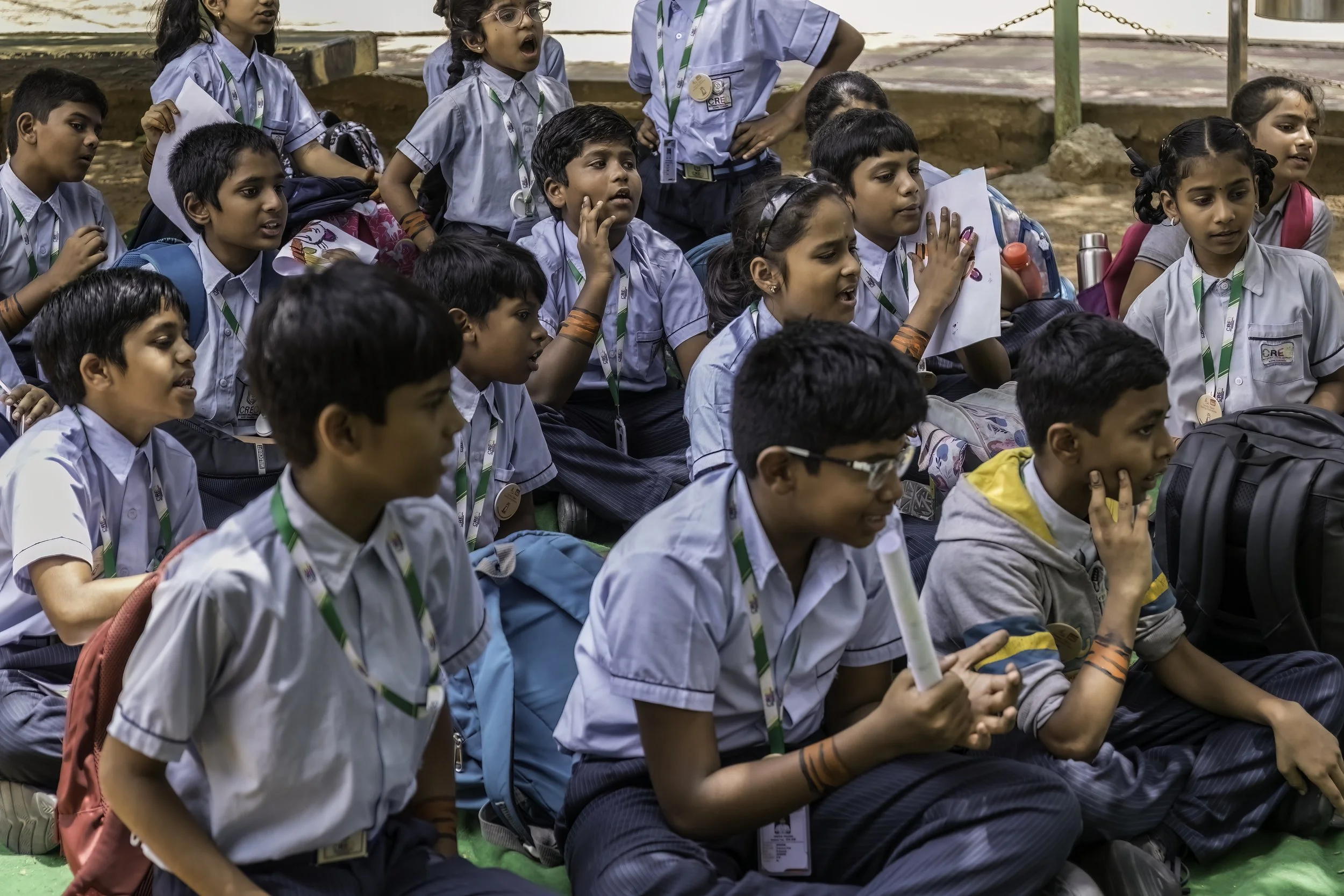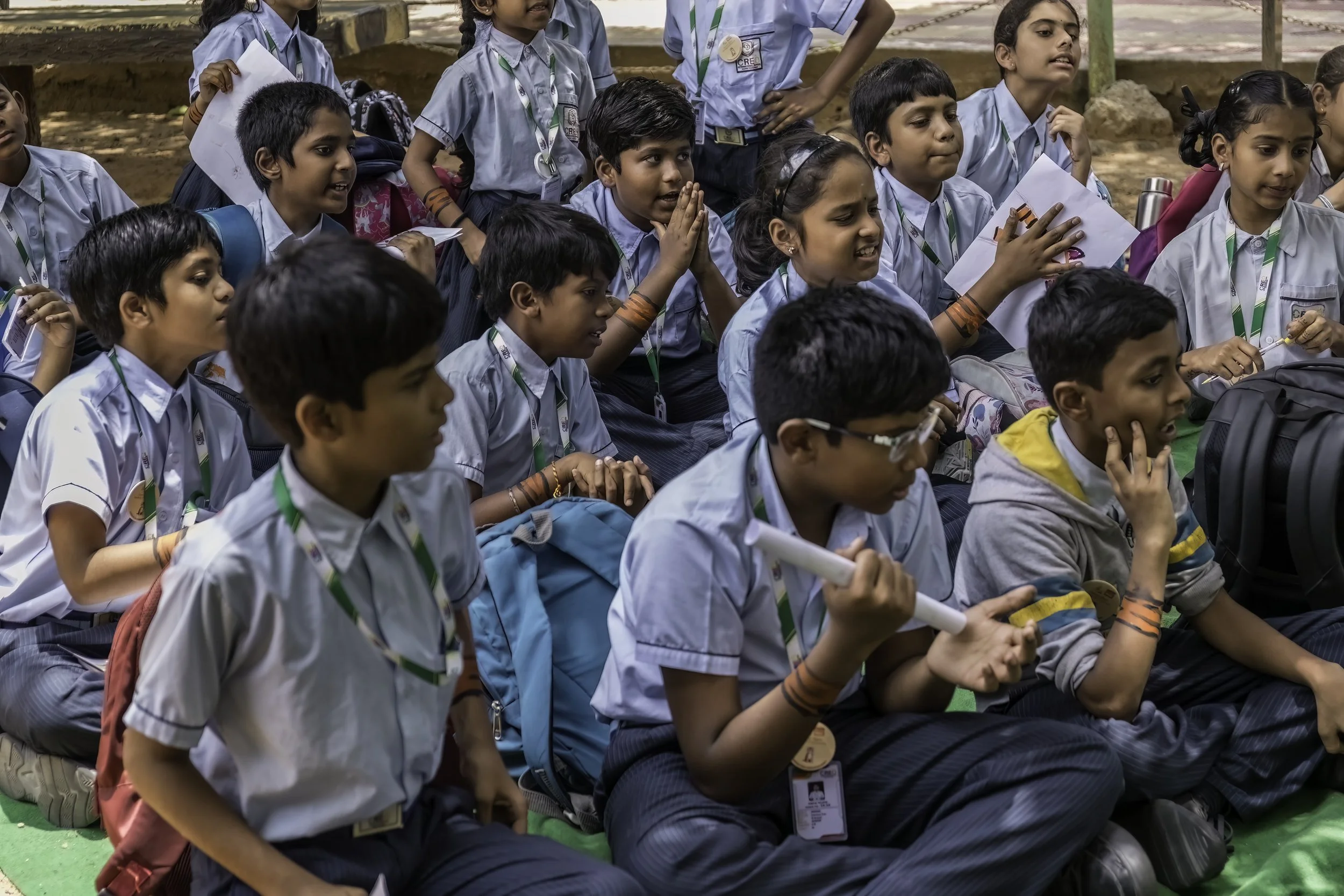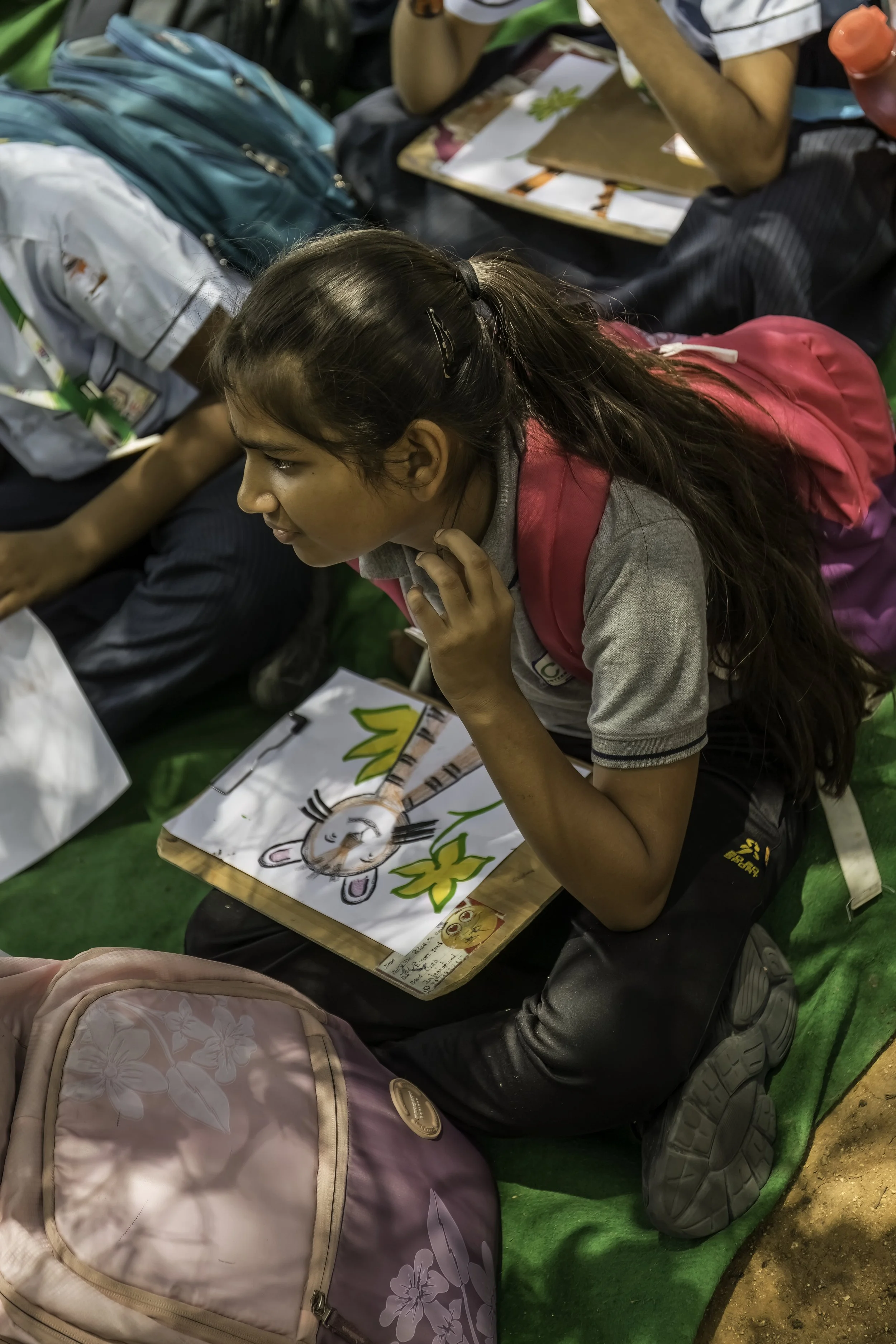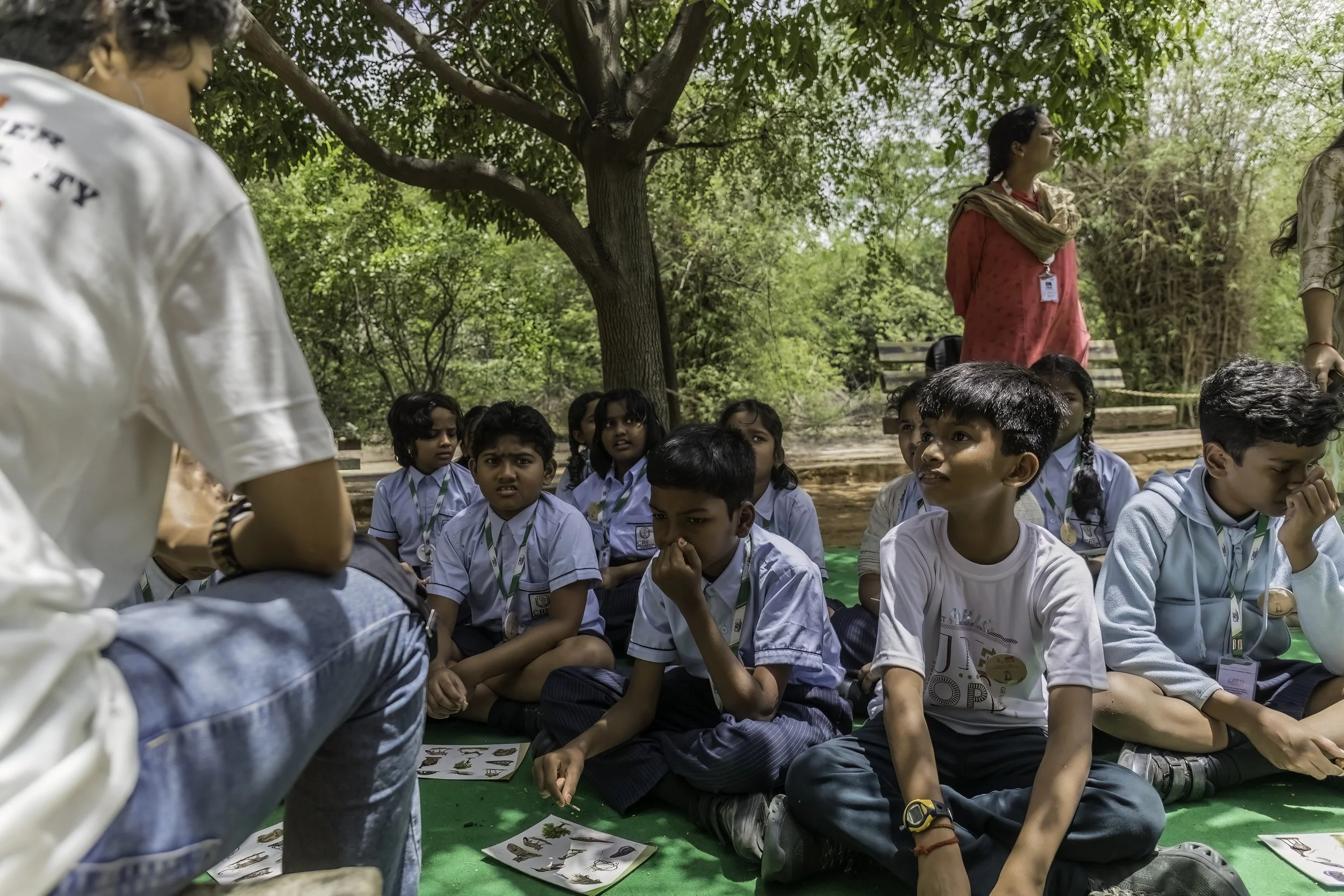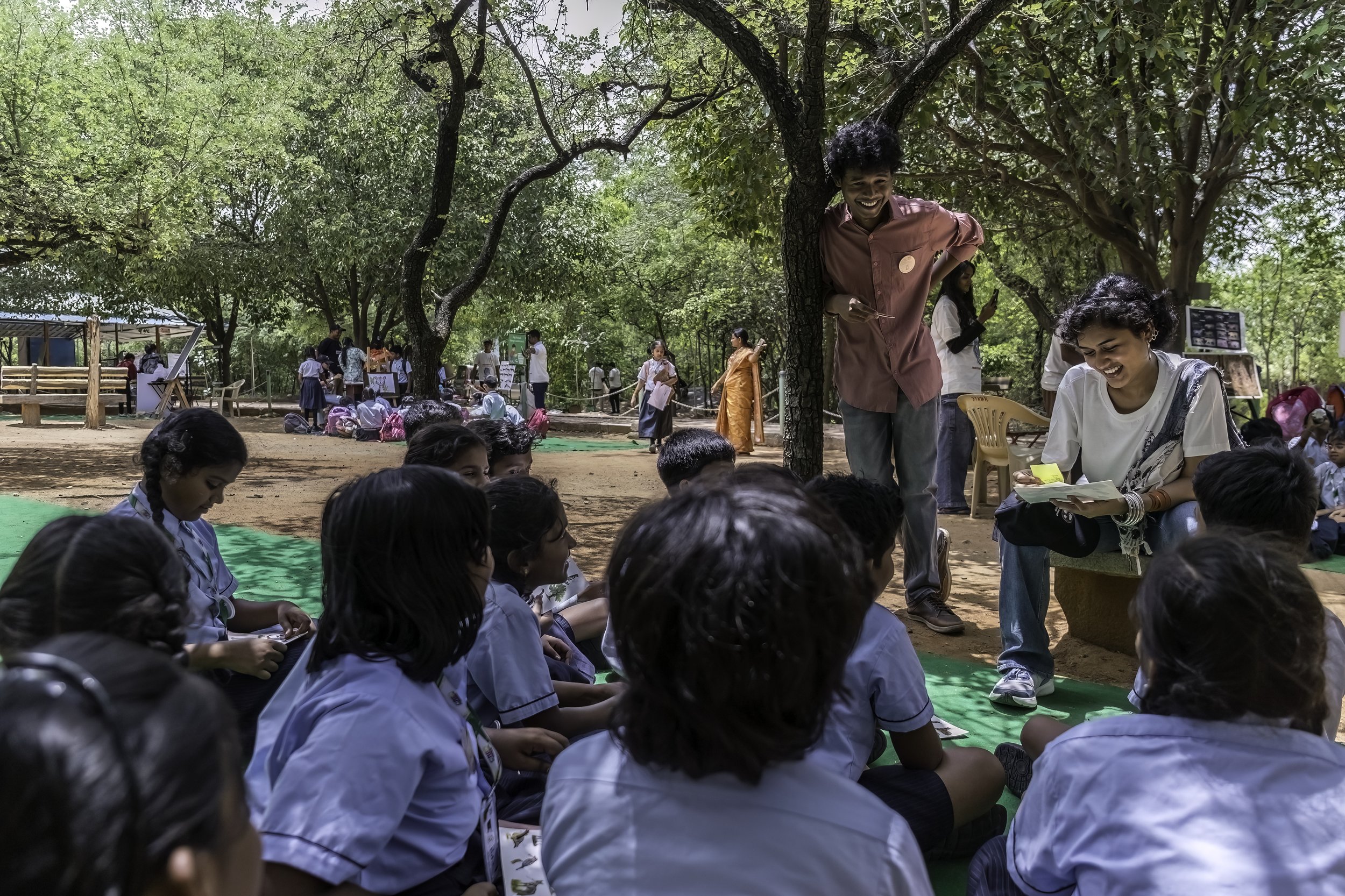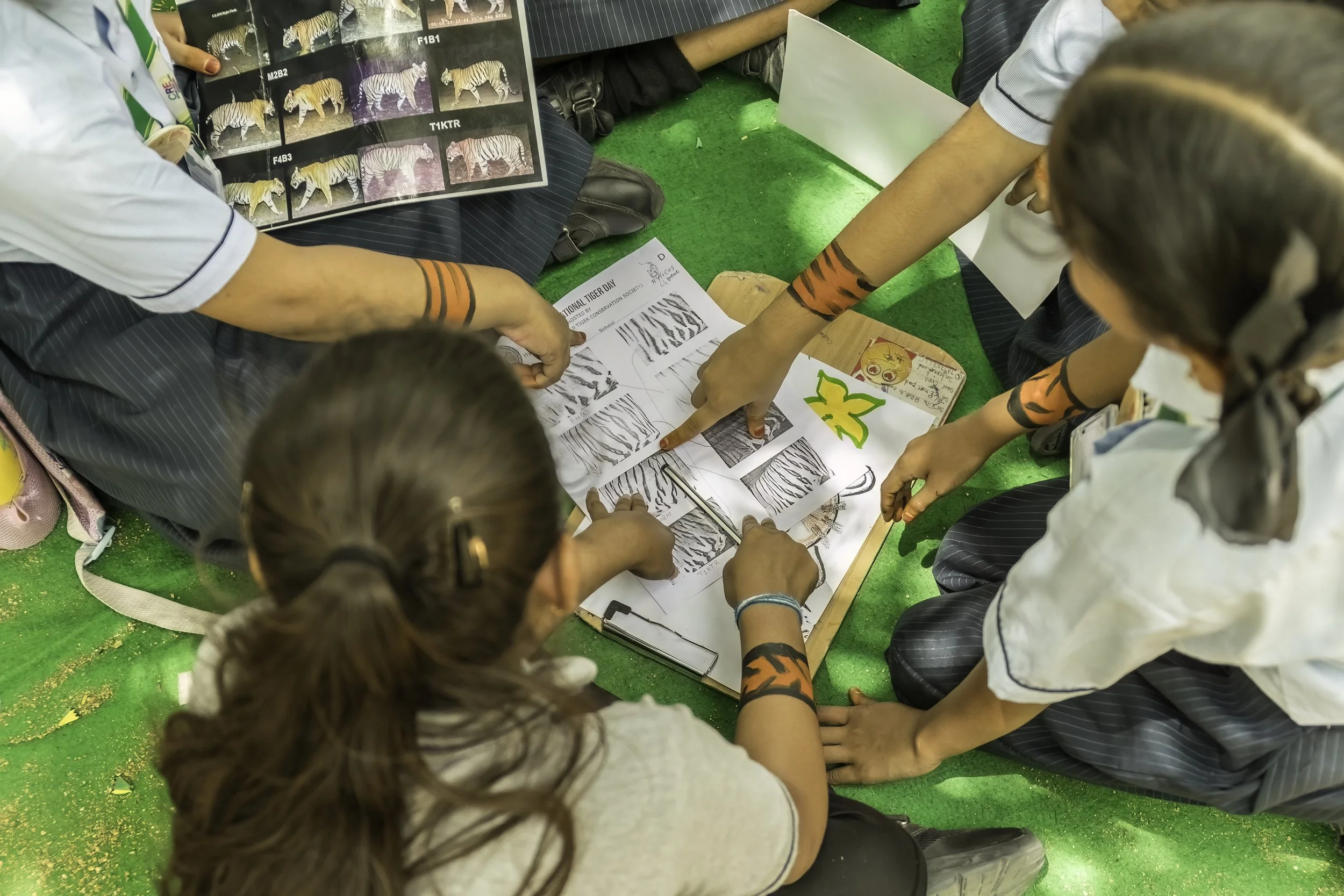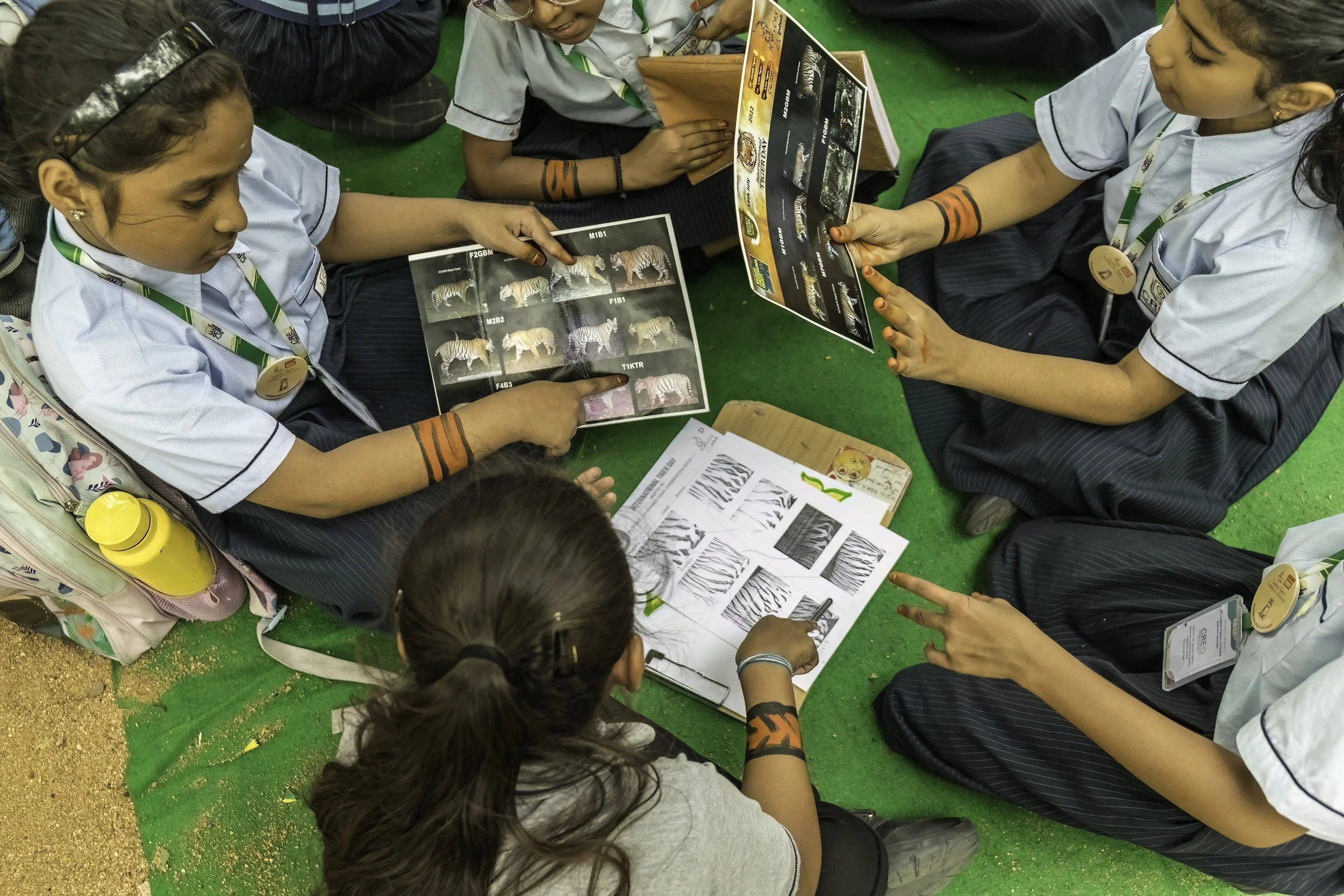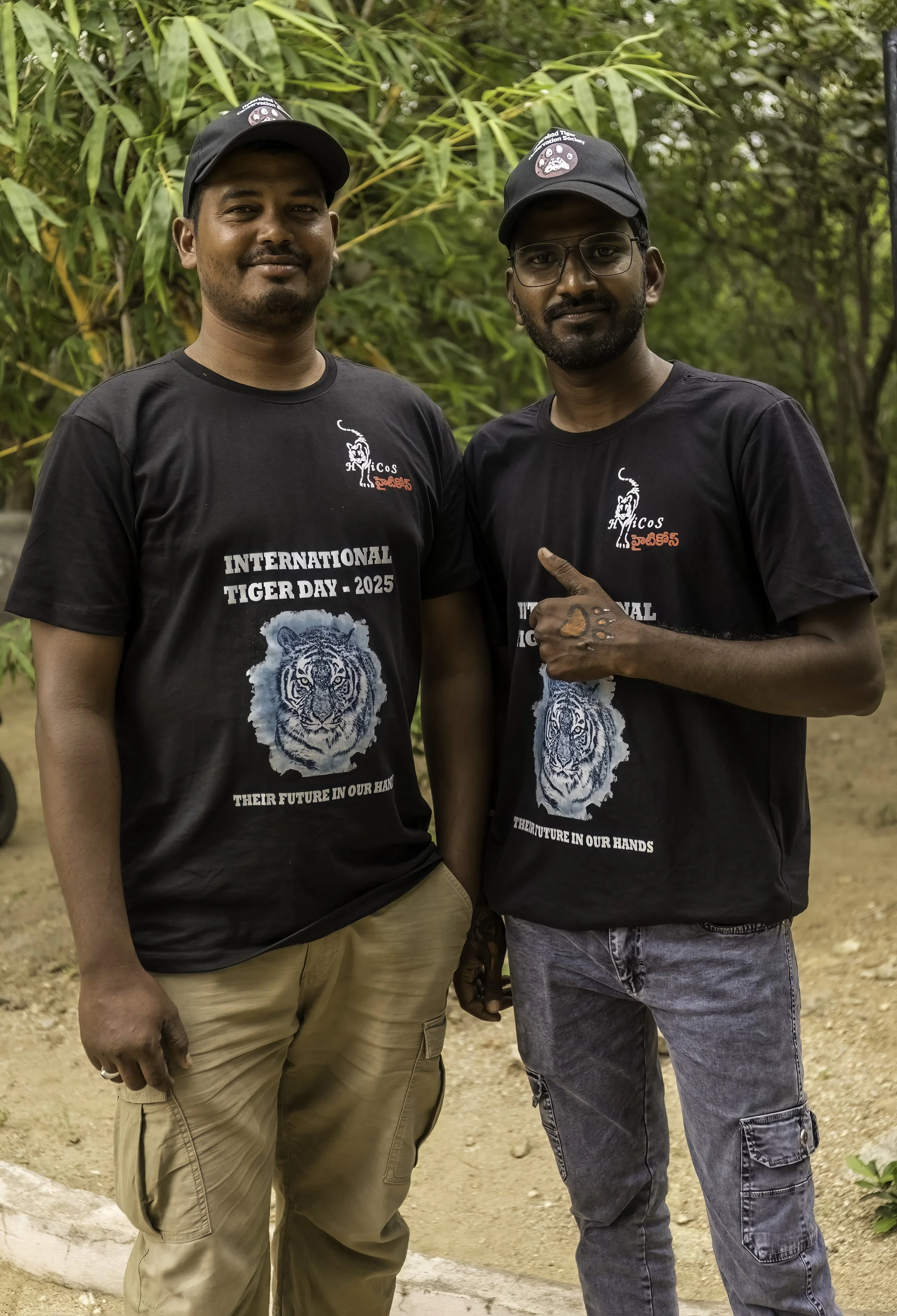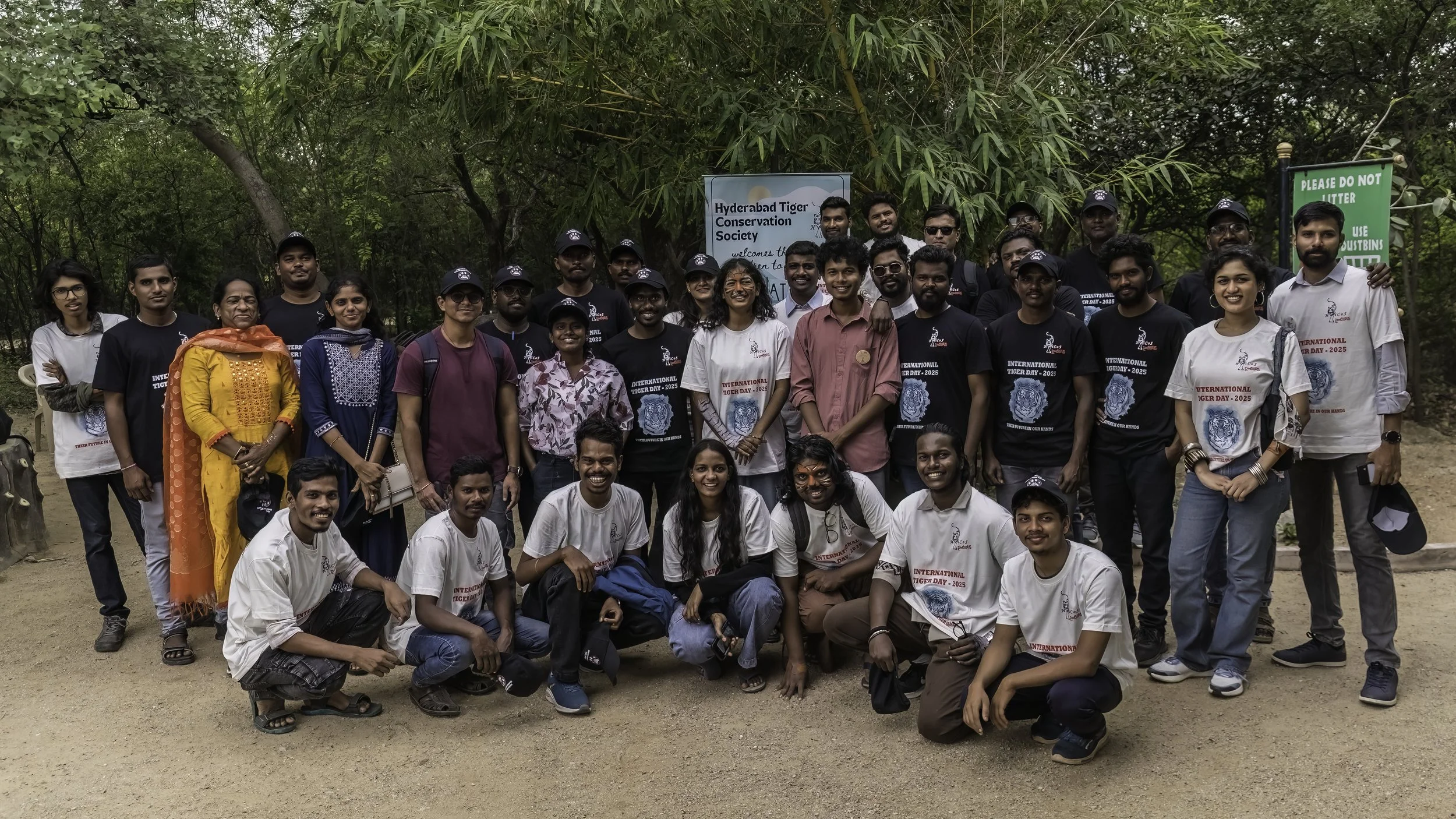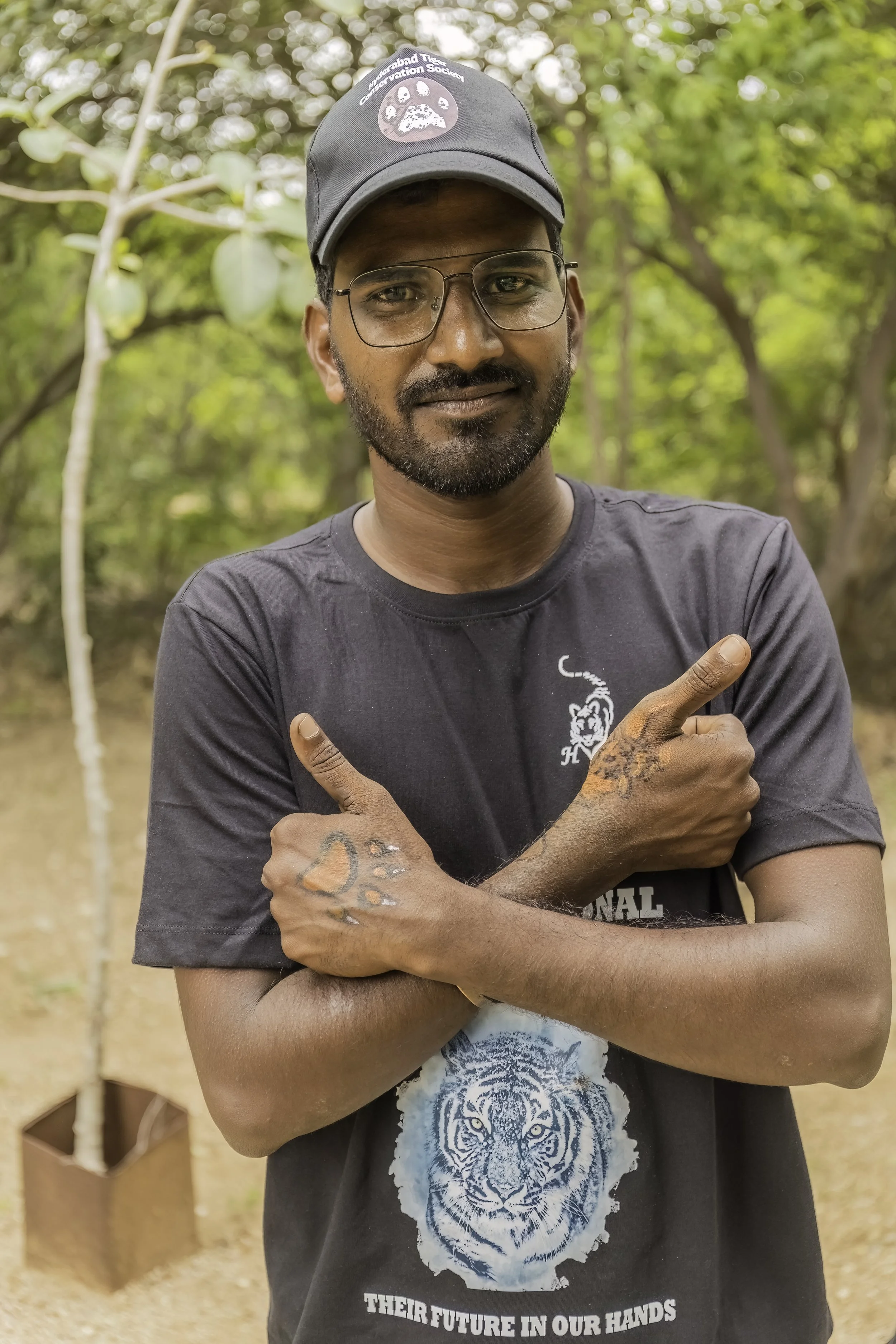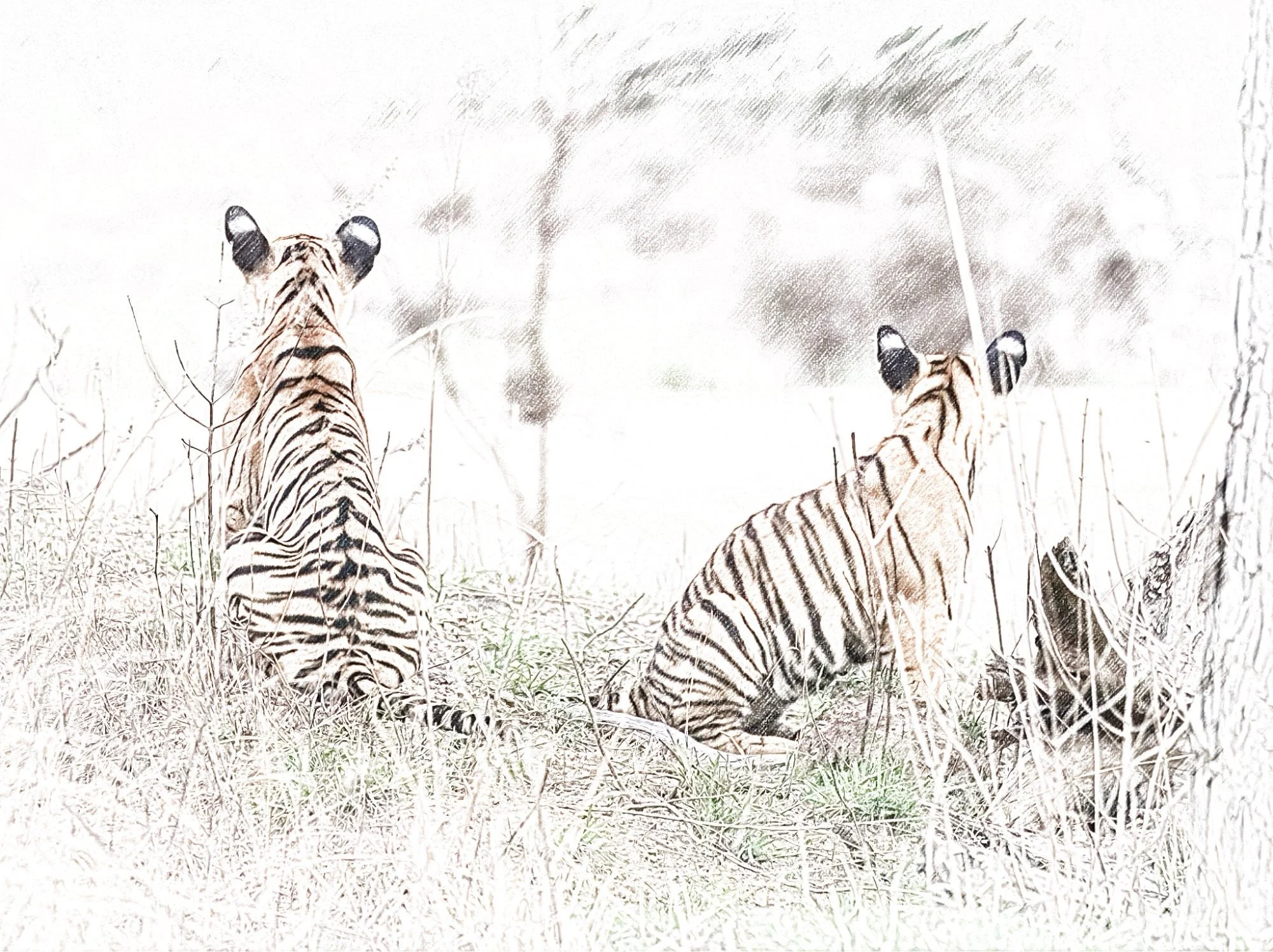Celebrating International Tiger Day
Panthera tigris tigris
ENDANGERED
Kasu Brahmananda Reddy National Park, Hyderabad, Telangana
Imagine a world without tigers! No regal stripes cutting through the jungle, no powerful roars echoing across the grasslands, no piercing amber eyes watching from the shadows. This isn’t just a grim fantasy - it is a future we’re racing towards - but today, July 29th, we are fighting back. In the early 1900s, approximately 100,000 tigers lived in Asia. By 2010, this number had fallen to about 3,200 due to poaching, habitat loss, and human-wildlife conflict. The Global Tiger Initiative (GTI) organized the 2010 Saint Petersburg Tiger Summit in response, leading to International Tiger Day and the Tx2 goal. Since then, the day has become a global campaign to protect tigers.
Welcome to the International Tiger Day! Through the course of this blog we will discover why these magnificent beasts capture our hearts and how close we've come to losing them forever and the cutting edge efforts that are bringing Tigers back from the dead. From high-tech conservation to ancient cultural significance, from heartwarming cub rescues to nail-biting anti-poaching operations, we're diving deep into the world of tigers. By the end you'll not only understand why tigers are worth saving but you'll know exactly how you can help ensure their survival.
Tigers, the largest members of the cat family, have captivated human imagination for centuries. Their striking orange coats adorned with black stripes make them one of the most recognizable animals on our planet but there's so much more to these apex predators than just their iconic appearance.
Let's start with some fascinating facts about tigers. Did you know that no two tigers have the same stripe pattern? The stripes of a tiger are like fingerprints unique to each individual. These powerful cats can weigh up to 300 kgs and measure up to 11 feet in length including their tail! Their roar, a sound that sends shivers down the spine, can be heard from as far as 3 kms away!
Listen as the jungle comes alive and announces the arrival of the tiger and as they all fall silent when he proclaims his supremacy.
Tigers are not just physically impressive, they are also incredibly adaptable. They can be found in a variety of habitats from the snowy wildernesses of Siberia to the mangrove swamps of Bengal. However their primary habitats are tropical rainforests, grasslands and mangrove swamps.
Discover some of the tigers of Central and South India.
Two of the three cubs from the recent litter of the 4-Mark Tigress of Maregaon watching as the third cub goes exploring. Read about the Meadow Queen of Maregaon
Now let's delve into the emotional connection we share with tigers. These majestic creatures evoke a range of emotions in us - awe at their power, admiration for their beauty and sometimes fear of their predatory nature. But there's also a tenderness in our hearts for Tigers especially when we see images of tiger mothers caring for their cubs or watch videos of these big cats playing like oversized house cats. This emotional connection is crucial because it drives our desire to protect them and protection is something Tigers desperately need. According to the Global Tiger Forum there are only about 5,500 Tigers left in the wild. This number, while an improvement from previous decades, is still alarmingly low.
India, home to about 75% of the world's wild tigers, has made considerable progress. The tiger population in India grew from 1,411 in 2006 to 3,682 in 2022. This shows a 6% annual increase in consistently monitored areas, according to PIB. Madhya Pradesh has the largest tiger population in India, followed by Karnataka, Uttarakhand, and Maharashtra. However, the situation in Southeast Asia remains challenging, with declining tiger populations in countries like Cambodia, Laos, and Vietnam, where they are considered functionally extinct. This decline is linked to widespread poaching, insufficient patrolling, and habitat loss.
The threats facing tigers are numerous and complex - habitat loss is perhaps the most significant issue. As human populations expand we encroach further into tiger territories clearing forests for agriculture, housing and infrastructure. This not only reduces the space available for tigers but also fragments their habitats making it difficult for tigers to find mates and maintain genetic diversity.
Poaching is another major threat! Despite International bans there's still a black market for Tiger parts used in traditional medicines and as status symbols. A single tiger can fetch tens of thousands of dollars on the illegal market creating a powerful incentive for poachers.
Human tiger conflict is also a growing concern as Tigers lose their natural habitats and prey becomes scarce they sometimes venture into settlements leading to dangerous encounters. This often results in retaliatory killings of tigers but it's not all doom and gloom.
International Tiger Day, observed annually on July 29th, emphasizes the critical need for tiger conservation and addresses the threats these big cats face. The day was established during the 2010 Saint Petersburg Tiger Summit in Russia, where 13 tiger-range countries united to combat declining tiger populations. The summit introduced the ambitious Tx2 goal: to double the global wild tiger population by 2022 through international cooperation and conservation efforts.
While we didn't quite reach that target significant progress has been made. Several countries including India, Nepal and Russia have seen increases in their tiger populations. These successes are the result of comprehensive conservation strategies which include
Habitat Protection and Restoration - creating and maintaining protected areas where tigers can thrive (Project Tiger: India's key initiative, launched in 1973, has created 58 Tiger Reserves across 18 states, providing protected breeding areas.) and The National Tiger Conservation Authority (NTCA) supports tiger reserves and conducts a national tiger census every four years. Tigers need large territories, but their habitats are shrinking rapidly. Deforestation for agriculture, development, and logging are major causes of habitat loss and fragmentation. This fragmentation isolates tiger populations, reducing genetic diversity and increasing their vulnerability. Maintaining corridors between tiger reserves helps reduce inbreeding and prevent conflict.
Anti-poaching Efforts - increasing patrols and using Advanced Technologies to combat poaching. International organizations like the Global Tiger Initiative (GTI), Global Tiger Forum (GTF), WWF, IUCN and HyTiCoS also contribute to international cooperation and anti-poaching efforts.
Community Engagement - working with local communities to reduce human tiger conflict and create economic incentives for Tiger conservation. Read more about how HyTiCoS helps and works with the tribal communities in Telangana.
Climate Change - Climate change is a significant long-term threat. Rising sea levels could eliminate habitat in the Sundarbans within decades. Forest fires and changes in prey availability due to climate change also pose risks.
Captive Breeding Programs - while controversial these programs aim to maintain genetic diversity and potentially reintroduce Tigers to areas where they've gone extinct;
International Cooperation - Tigers don't recognize human national borders therefore countries need to work together to protect these animals across their range.
But conservation isn't just the job of governments and organizations - each one of us can play a role in protecting Tigers. Here's how you can help:
spread awareness share “How to Help!” information about tigers and the challenges they face with your friends and family;
support conservation organizations - donate to established reputable organizations working on tiger conservation;
be a responsible tourist if you visit tiger habitats - choose eco-friendly tours that respect wildlife and support local communities;
make sustainable choices - reduce your carbon footprint and avoid products that contribute to deforestation;
use your voice - advocate for policies that protect wildlife and their habitats
International Tiger Day raises global awareness about threats like poaching and habitat destruction. It also promotes international collaboration, encourages community involvement, and emphasizes the connection between tiger survival and healthy ecosystems. Tigers, as apex predators, are essential for maintaining ecological balance and healthy forest ecosystems. These ecosystems provide vital resources like clean water and air for humans. The theme for International Tiger Day 2025 is "Securing the future of Tigers with Indigenous Peoples and Local Communities at the heart" - their future is in our hands! This theme recognizes the crucial role of local communities in sustainable tiger conservation and their deep connection to forest ecosystems.
As we celebrate International tiger day let's remember that these magnificent creatures are more than just symbols or attractions. They are vital components of their ecosystems helping to maintain the balance of nature. Tigers are apex predators and their presence indicates a healthy environment that can support a wide range of other species. Moreover, Tigers hold cultural significance in many societies, in many Asian cultures tigers symbolize strength courage and dignity. They feature prominently in folklore, art and literature and by protecting Tigers we're also preserving an important part of our cultural heritage.
The video below summarises the day. The event was a HYTICOS & KBR Park Telangana State Forest Department initiative sponsored by Gland Pharma. A half day event where almost 600 children of 9 different schools from around the city participated in various wildlife and nature themed games and educational sessions conducted by 30 volunteers. They were taught how wildlife was being monitored, protected and rescued with the help of technology and camera trapping. They were shown how to identify various species based on their tracks and scat. The children were also encouraged to talk to their friends and family and spread awareness on the importance of conserving an umbrella species like the tiger. There was active participation and support from the Telangana Forest Department officers and staff including the staff of the Kasu Brahmananda Reddy National Park.
The photo gallery from the event is also included below.
Looking to the future, there is reason for cautious optimism, the global commitment to Tiger conservation is stronger than ever. New technologies from camera traps to thermal imaging and easy access to social media is enhancing our ability to monitor and protect tiger populations and raise public awareness about the importance of conservation. However we must not become complacent. Climate change poses a new threat to Tigers potentially altering their habitats and affecting their prey bases. We need to factor this into our conservation strategies moving forward
As we conclude our journey through the world of tigers on this International Tiger day let's take a moment to reflect on what we've learned. We have witnessed the raw power and breathtaking beauty of these magnificent creatures. We have understood their crucial role in maintaining the delicate balance of our ecosystems and we've seen the dedication of countless individuals working tirelessly to ensure tigers have a future on our planet. The International Tiger Day is more than just a celebration. It is a call to action - it reminds us of our responsibility to protect these incredible animals in the wild places they call home. Every tiger saved, every hectare of forest protected is a victory not just for Tigers but for our planet as a whole.
So today, as we marvel at the beauty and power of tigers let us also commit to ensuring their survival - whether it's through spreading awareness, supporting conservation efforts or making more sustainable choices in our daily lives - we all have a role to play. Remember, in saving the tiger we're not just preserving a species, we are protecting entire ecosystems maintaining the balance of Nature and ultimately safeguarding our own future on this planet. It isn't just about tigers! It is about us! It is about our relationship with nature, our commitment to preserving biodiversity and our responsibility to protect the wilds that make our world so extraordinary.
Every time we choose to speak up for Tigers, support conservation efforts or make eco-friendly choices in our daily lives, we are writing a new chapter in this story. A chapter where humans and tigers coexist, where forests thrive and where the roar of the tiger continues to echo across landscapes for generations to come.
So as you go about your day carry with you the spirit of the Tiger - be bold, be resilient and above all be a force for positive change. Share what you've learned with others, support organizations working on the ground make choices that benefit not just Tigers but all wildlife and our shared environment. Remember every action, no matter how small, ripples out into the world and makes a difference. Together we can turn the tide for tigers and ensure that International tiger day remains a celebration not a memorial.
Thank you for joining us on this International Tiger Day - let us make every day a day for Tiger conservation. Together we can ensure that future generations will continue to share this planet with these magnificent creatures.
Photo Gallery
Related Posts

